#Art Classes in Harvard MA
Explore tagged Tumblr posts
Text
Watercolor Cities Two Ways in Whimsical Watercolors 2!
Back into the studio we went this past weekend to enjoy watercolors in Whimsical Watercolors 2!
Our show and share this week was fabulous once again, with watercolor cities painted in two different ways. Our first project was working intuitively and creating a village landscape using the colors that we inadvertently had on our paper by sketching out and doodling buildings . It’s a super fun project because you just don’t know what you’re going to end up with!
Our second project was a little more involved, using found papers and objects to add to the base of our painted piece. The ephemera that we used for the base helped us get a “color story” together. This helped us by making it easier to choose our paint colors for the upper portion of the page. Using found papers, buttons, stickers, pieces of fabric, we collaged these pieces together for the bottom portion of our pages, making them unique and interesting!
#watercolor class Harvard MA#Watercolor Paintings#watercolor art class#Watercolor#watercolor classes#adult watercolor class#beginner watercolor classes#Central MA Art Classes#Art Classes in Harvard MA#Art Class Littleton MA#Art Classes
0 notes
Text

Bibliography & Footnotes
Andrews, D. (2000) “The ‘Three Ages’ of Cinema Studies and the Age to Come.” PMLA (115)3 (May): 341–51.
— . (1985) “Of Canons and Quietism: Dudley Andrews Responds to Jane Staiger’s ‘The Politics of Film Canons’.” Cinema Journal (25)1 (Fall): 55–61.
Arnheim, R. (1997) Film Essays and Criticism (B. Benthien., Trans.). Madison: University of Wisconsin Press.
— . (1989) Film as Art. Los Angeles: University of California Press.
Aronowitz, S. (1994) Roll Over Beethoven. Hanover, NH: Wesleyan University Press.
Baudry, J. (1986) “The Apparatus.” Narrative, Apparatus, Ideology: A Film Theory Reader (P. Rosen., Ed.). New York: Columbia University Press: 299–319.
Bazin, A. (1996) Bazin at Work: Major Essays and Reviews from the Forties and Fifties. (A. Piette., Trans.). New York: Routledge.
— . (1967) What is Cinema? (H. Gray., Trans.). Los Angeles: University of California Press.
Bérubé, M. (1994) “Pop Goes the Academy: Cult Studs Fight the Power” Public Access: Literary Theory and American Cultural Politics. London: Verso.
Brantlinger, P. (1990) Crusoe’s Footprints. New York: Routledge.
Brunette P., & D. Wills. (1989) Screen/Play: Derrida and Film Theory. Princeton, NJ: Princeton University Press.
Cavell, S. (1981) Pursuits of Happiness: The Hollywood Comedy of Remarriage. Cambridge, MA: Harvard University Press.
Cohn, J. (2009) “What is Anarchist Cultural Studies? Precursors, Problems and Prospects.” New Perspectives on Anarchism. Ed. N. Jun & S Wahl. Lanham, MD: Lexington Books: 403–24.
Deleuze, G. (1990) Expressionism in Philosophy: Spinoza. (M. Joughin., Trans.). New York: Zone Books.
Deleuze, G., & F. Guattari. (1977) Anti — Oedipus: Capitalism and Schizophrenia (R. Hurley, M. Seem, & H.R. Lame., Trans.). New York: Viking Press.
— . (1986) A Thousand Plateaus — Capitalism and Schizophrenia (B. Massumi., Trans.). Minneapolis: University of Minnesota Press.
— . (1986) Kafka: Toward a Minor Literature (D. Polan., Trans.). Minneapolis: University of Minnesota Press.
Deleuze, G., & C. Parnet. (1987) Dialogues (H. Tomlinson & B. Haberjam., Trans.). New York: Columbia University Press.
Derrida, J. (1981) Positions (A. Bass., Trans.). Chicago: University of Chicago Press, 1981.
— . (1978) Writing and Difference (A. Bass., Trans.). Chicago: University of Chicago Press.
— . (1976) Of Grammatology (G.C. Spivak., Trans.). Baltimore: Johns Hopkins Press.
During, S., Ed. (1993) The Cultural Studies Reader. New York: Routledge.
Eiseinstein, S. (1969) The Film Sense and The Film Form. New York: Harcourt Brace.
Fiske, J. (1993) Power Plays, Power Works. New York: Verso.
Foucault, M. (2003) The Essential Foucault (P. Rabinow & N. Rose., Eds.). New York: The New Press.
— . (1995) Discipline and Punish (A. Sheridan., Trans.). New York: Vintage Books.
— . (1994) The Order of Things. New York: Vintage Books.
— . (1990) The History of Sexuality: An Introduction. New York: Vintage Books.
— . (1972) The Archaeology of Knowledge (A. Sheridan., Trans.). New York: Pantheon.
— . (1965) Madness and Civilization (R. Howard., Trans.). New York: Pantheon.
Frank, T. (2000) One Market Under God. New York: Anchor Books.
Friedberg, A. (1997) “Cinema and the Postmodern Condition.” Viewing Positions: Ways of Seeing Film (L. Williams., Ed.). New Brunswick, NJ: Rutgers University Press: 59–86.
Gans, H. (1985) “American Popular Culture and High Culture in a Changing Class Structure.” Prospects: An Annual of American Cultural Studies 10: 17–37.
— . (1974) Popular Culture and High Culture. New York: Basic Books.
Grossberg, L. (1992) We Gotta Get Outta This Place. New York: Routledge.
Heath, S. (1976) “Narrative Space.” Screen (17)3: 68–112
Hoggart, R. (1995) The Way We Live Now. London: Chatto & Windus.
Horkheimer M., & T. Adorno. (1993) “The Culture Industry: Enlightenment as Mass Deception.” The Dialectic of Enlightenment. Trans. J. Cumming. New York: Continuum: 120–67.
Jay, M. (1997) Downcast Eyes: The Denigration of Vision in Modern French Thought. Berkeley: University of California Press.
Kracauer, S. (1997) Theory of Film: The Redemption of Physical Reality. Princeton, NJ: Princeton University Press.
Leavis, F.R. (1952) Scrutiny: A Reprint, 20 volumes. Cambridge: Cambridge University Press.
Levine, L. (1988) Highbrow/Lowbrow: The Emergence of Cultural Hierarchy in America. Cambridge, MA: Harvard University Press.
Marcuse, H. (1964) One — Dimensional Man. Boston: Beacon Press.
May, T. (1994) The Political Philosophy of Poststructuralist Anarchism. University Park, PA: Pennsylvania State University Press.
McRobbie, A. (1994) Postmodernism and Popular Culture. New York: Routledge.
Metz, C. (1974) Language and Cinema. The Hague: Mouton.
— . (1973) “Current Problems of Film Theory” (D. Matias., Trans.). Screen 14:1–2: 40–88
Mitry, J. (1997) The Aesthetics and Psychology of Cinema (C. King., Trans.). Bloomington, IN: Indiana University Press.
Mulhern, F. (1979) The Moment of Scrutiny. London: Verso.
Mulvey, L. (1975) “Visual Pleasure in the Narrative Cinema.” Screen (16)3: 6–18.
Polan, D. (1985) “The Critique of Cinematic Reason: Stephen Heath and the Theoretical Study of Film,” boundary (2)13,2/3 (Winter — Spring):157–71.
Staples, D. (1966–67) “The Auteur Theory Reexamined.” Cinema Journal 6: 1–7.
[1] For an excellent overview of formalism in film theory, see (Andrews, 2000: 341–51).
[2] See, for example, Leavis (1952). On Leavis’ dismissal of cinema and mass culture more generally, see Mulhern (1979).
[3] This position receives one of its fullest articulations in Marcuse (1964).
[4] For example, Barthesian semiotics, Althusserian Marxism, and Lacanian psychoanalysis.
[5] Of particular importance are Baudry (1986: 299–319), Heath (1976: 68–112), Metz (1973: 40–88; 1974), Mulvey (1975: 6–18).
[6] For example, statements about airplanes could not be uttered in the Middle Ages because the historical a priori condition necessary for the production, transmission, and intelligibility of such statements within discourse (viz., the actual existence of airplanes) was not yet satisfied.
#bibliography#reading lists#cinema#film theory#movies#anarchist film theory#culture industry#culture#deconstruction#humanism#truth#the politics of cinema#anarchism#anarchy#anarchist society#practical anarchy#practical anarchism#resistance#autonomy#revolution#communism#anti capitalist#anti capitalism#late stage capitalism#daily posts#libraries#leftism#social issues#anarchy works#anarchist library
7 notes
·
View notes
Text

Press Release
Harvard Art Museums’ Fall 2023 Exhibition Explores
Entwined Histories of the Opium Trade and the Chinese

Art Market
Opium pipe, China, Qing dynasty to Republican period, inscribed with cyclical date corresponding to 1868 or 1928. Water buffalo horn, metal, and ceramic. Harvard Art Museums/Arthur M. Sackler Museum, Bequest of Grenville L. Winthrop, 1943.55.6.
Cambridge, MA
This fall, the Harvard Art Museums present an exhibition that explores the entangled histories of the western sale of opium in China in the 19th century and the growing appetite for Chinese art in the United States at the beginning of the 20th century. Opium and Chinese art—acquired through both legal and illicit means—had profound effects on the global economy, cultural landscape, and education, and in the case of opium on public health and immigration, that still reverberate today. Objects of Addiction: Opium, Empire, and the Chinese Art Trade, on display September 15, 2023 through January 14, 2024 in the Special Exhibitions Gallery on Level 3 of the Harvard Art Museums, looks critically at the history of Massachusetts opium merchants and collectors of Chinese art, as well as the current opioid crisis.
A range of accompanying public programs will encourage community discussion around related topics, including the state of the opioid crisis in New England, the lingering political and economic effects of the Opium Wars, opium’s role in anti-Chinese U.S. immigration laws, and Chinese art collecting in Massachusetts. In addition, the artist collective 2nd Act will present a series of drama therapy workshops challenging ideas about addiction, and the Cambridge Public Health Department and Somerville Health and Human Services will host trainings on the use of naloxone (Narcan) to reverse opioid overdoses. In the early planning stages, Sarah Laursen, the Alan J. Dworsky Associate Curator of Chinese Art at the Harvard Art Museums, worked with Harvard students Emily Axelsen (Class of 2023), Allison Chang (Class of 2023), and Madison Stein (Class of 2024), who were instrumental in the development of the exhibition’s narrative and associated programming. Laursen also held a series of community feedback sessions to solicit reactions to the show’s content from Harvard students, faculty, and staff, as well as local experts and community members. Notably, the exhibition is opening during National Recovery Month, a national observance held each September to educate Americans about substance use disorder and the treatment options and services that can enable them to live healthy and rewarding lives.
“This exhibition is about the past and its impact on the present—but my hope it that it will also help us to think more productively about the future,” said Laursen.
“For example, the stigma around opium use initially resulted in the Qing government imposing harsh punishments for people experiencing addiction, rather than offering the empathy, treatment, and resources that people needed. Today, with overdose death rates in Massachusetts topping 2,300 individuals per year, we can learn from the past and choose to adopt harm reduction measures that will save lives.” On the collecting of Chinese art, Laursen notes, “By reexamining the formation of early 20th-century museum collections—as well as the underrecognized consequences of these initial acquisitions—we become better equipped to shape our policies for ethical collecting in the future.”
The exhibition comprises three thematic sections and presents more than 100 objects, including paintings, prints, Buddhist sculptures and murals, ceramics, jades, and bronzes, as well as historical materials including books, sale and exhibition catalogues, and magazine clippings from the collections of the Harvard Art Museums, with loans generously provided by the Peabody Museum of Archaeology and Ethnology, Fine Arts Library, Harvard-Yenching Library, Economic Botany Library of Oakes Ames, Houghton Library, and Baker Library (all at Harvard), as well as by the Forbes House Museum, the Ipswich Museum, and Mr. and Mrs. James E. Breece III.
Beginning with an examination of the origins of the opium trade, the first section includes a large comparative timeline that lays out events in China, Europe, and the United States in order to contextualize the complex histories of the opium and Chinese art trades. Britain began illegally selling Indian opium in China in the 18th century and increased its exports to counteract the demand for Chinese tea imports in Europe and the United States. In the 19th century, prominent Massachusett merchants such as members of the Perkins, Forbes, Heard, Cushing, Sturgis, Cabot, Delano, Weld, Peabody, and other elite local families were deeply involved in the lucrative Turkish opium trade as well. Conflicts between the Qing dynasty (1644–1911) and western powers over trading rights led to two Opium Wars (1839–42 and 1856–60), whose outcomes had far-reaching political and economic consequences.
In this first gallery, examples of typical Chinese export wares including tea wares, porcelains, and paintings that were popular in Europe and North America are presented alongside opium-related objects, including an opium pipe made of water buffalo horn and an opium account book for the year 1831 that lays bare the volume of the drug imported into the port of Guangzhou by just one firm, Russell & Co., run initially by members of Forbes family. A Qing dynasty painting of the Port of Shanghai (c. 1863–64), which became a commercial center after the first Opium War, shows a bustling harbor filled with boats and ships and reveals the location of the offices of prominent opium traders such as Russell & Co. and Augustine Heard & Co. Also visible is the headquarters of auctioneer Hiram Fogg, the brother of the China trader William Hayes Fogg, for whom Harvard’s Fogg Museum is named. Along with commerce, the first gallery also presents a range of documentary materials and ephemera that demonstrate the devastating impact of opium on Chinese society. Photographs and mass media illustrations critique the use and sale of opium. A slideshow, In Their Own Words, presents quotations from a diverse range of voices of individuals who were involved in or opposed the sale of opium and collecting of Chinese art. In many cases, these quotes flesh out the perspectives of historical figures who are named in labels throughout the galleries. Audio wands available in this space play excerpts from “Opium Talk,” an essay by Zhang Changjia (Shanghai, 1878) translated by Keith McMahon in The Fall of the God of Money: Opium Smoking in Nineteenth-Century China (Rowman & Littlefield, 2002).
The translations are read by Thomas Ho, a member of the local Chinese American community, and a transcript is available in the gallery, printed with permission from McMahon.
The second section highlights the history of imperial art collecting within China and demonstrates the growing appetite for Chinese art in Europe and the United States after the Opium Wars, especially after the looting of the Old Summer Palace in Beijing by British and French Troops in 1860 and in the wake of the Boxer Rebellion (1899–1901). Through the histories of merchants, collectors, dealers, museum directors, and professors, this section examines the early 20th-century formation of Chinese art collections in Massachusetts, including at the Fogg Museum. Chinese works from the collections of the Forbes House Museum and Ipswich Museum—once homes of opium traders of the Forbes and Heard families—show the taste at this time predominantly for functional or decorative objects such as export ceramics, lacquer furnishings, and other curiosities. However, the flood of newly available palace treasures and archaeological materials prompted the collecting of ancient bronzes and jades unearthed from tombs and Buddhist sculptures chiseled from cave temple walls.
Well-connected dealers in Asian art such as C. T. Loo (or Loo Ching-tsai) and Sadajirō Yamanaka 山中定次郎 acquired items from several sources—including from Chinese elites who fled the country after the fall of the Qing dynasty, imperial family members, and American collectors who lost their fortunes in the Depression—and sold those works to eager collectors around the world, such as Harvard alumnus Grenville L. Winthrop, who obtained 25 fragments from Buddhist cave temples in Tianlongshan, China.
The exhibition includes one work from this group, a sixth-century carved fragment depicting Bodhisattva Manjusri (Wenshu Pusa); to learn more about the Tianlongshan fragments now in the museums’ collections, visit hvrd.art/reframingtianlongshan. Others such as Langdon Warner, a Harvard alumnus and curator at the Fogg Museum, joined the First Fogg Expedition to China (1923–24) and personally removed works from the Mogao Caves in Dunhuang, leaving permanent scars on the archaeological landscape of China. Two wall painting fragments, among the best preserved of the twelve that Warner brought back to Harvard, are displayed alongside a large-sale photograph showing the present condition of the mural from which they were removed (Bust of an attendant bodhisattva and Bust of a bodhisattva surrounded by a monk and devas).
Exhibition curator Sarah Laursen added: “I am often asked, where did this object come from? How did it come to Harvard? In many cases, we do not know their precise sources nor the circumstances of their removal because in the past there was no demand for documentation. For most U.S. collections of Asian art it is rarely possible to reconstruct the complete chain of ownership. But there are some questions we can start to answer: How can we work with source countries to better document, care for, and understand these objects? How can we curtail the black market? What could ethical collecting or sharing of cultural property look like in the future?”
A third section, entitled Opioids Then and Now, investigates parallels between China’s opium crisis and the opioid epidemic in Massachusetts today. Materials here clarify how addiction affects the brain (an animated video, produced for a free online Harvard edX course, plays on a monitor) and offer potentially life-saving information about harm reduction and overdose prevention. Visitors are invited to share their thoughts and personal experiences on response cards in this space and can either post them publicly on a bulletin board in the gallery or deposit them in a private box to be preserved in the Harvard Art Museums Archives. Visitors will also be able to browse recent books about opioids and harm reduction.
A 24-page printed booklet available in the galleries draws together the exhibition’s extensive content in three thematic essays: Who has benefited from the opium trade? Who has been harmed by opium?
What is the legacy of the opium trade in U.S. museums?
None of the works in the exhibition or in the Harvard Art Museums collections as a whole were collected or gifted by Arthur M. Sackler, nor were they purchased using funds provided by him.
Online Resource
Exhibition webpage: harvardartmuseums.org/objectsofaddiction
Public Programming
A range of public programs held in conjunction with the exhibition Objects of Addiction will encourage community discussion around the opioid crisis, the effects of the Opium Wars on U.S.–China relations, the role of opium in Chinese exclusion in the United States, and art collecting practices. Unless noted, all events are held in-person at the Harvard Art Museums, 32 Quincy Street, Cambridge, MA 02138.
Admission to visit our galleries is free, but some programs have a fee (noted below). For updates, full details, and to register, please click the links below or see our calendar:
harvardartmuseums.org/calendar. Questions? Call 617-495-9400.
Lecture — Objects of Addiction: Opium, Empire, and the Chinese Art Trade
Thursday, September 14, 2023, 6–7:30pm
Join curator Sarah Laursen for a lecture on opium and Chinese art—two influential commodities traded in China, the British Empire, and Massachusetts between the 18th and early 20th centuries.
Free admission, but seating is limited and available on a first-come, first-served basis. Following the lecture, guests are invited to visit the exhibition on Level 3. This lecture will be recorded and made available for online viewing; check the link above after the event for the link to view.
Workshops — Rethinking Addiction: A Drama Therapy Workshop with 2nd Act Artist Collective
Saturday, September 16, 2023, 2–4pm
Sunday, October 22, 2023, 2–4pm
Saturday, November 11, 2023, 2–4pm
Drama therapists Ana Bess Moyer Bell and Amy Lazier of the artist collective 2nd Act will lead workshops designed to challenge participants’ ideas about addiction through a drama therapy model. By examining, embodying, and de-stigmatizing addiction and creating metaphorical objects of care, love, and support, participants will develop a shared understanding of addiction and how it affects daily life. $15 materials fee. Registration is required and space is limited. Minimum age of 14; no previous experience required.
Lecture — Objects of Addiction: Perspectives on the Opioid Crisis in New England
Sunday, September 24, 2023, 2–3:30pm
Specialists in addiction medicine, harm reduction, and public health policy will take part in a roundtable discussion about the current state of the opioid crisis in New England. Speakers:
Danielle McPeak, Prevention and Recovery Specialist, Cambridge Public Health Department; Leo Beletsky, Professor of Law and Health Sciences; Faculty Director, The Action Lab at the Center for Health Policy and Law, Northeastern University; Mark Joseph Albanese, Assistant Professor of Psychiatry, Harvard Medical School; Medical Director, Physician Health Programs; former Medical Director for Addictions, Cambridge Health Alliance; Bertha Madras, Professor of Psychobiology, Harvard Medical School; Director, Laboratory of Addiction Neurobiology, and Psychobiologist,
Division of Basic Neuroscience, McLean Hospital; Jay Garg ’24, Policy Chair for HCOPES
(Harvard College Overdose Prevention and Education Students); and Dennis Bailer, Overdose Prevention Program Director, Project Weber/RENEW. Free admission, but seating is limited and available on a first-come, first-served basis. Before and after the discussion, guests are invited to visit the exhibition on Level 3.
Gallery Talks — Objects of Addiction: Opium, Empire, and the Chinese Art Trade
Tuesday, October 3, 2023, 12:30–1pm
Wednesday, October 18, 2023, 12:30–1pm
Thursday, November 16, 2023, 12:30–1pm
Friday, December 1, 2023, 12:30–1pm
Wednesday, December 13, 2023, 12:30–1pm
Join curator Sarah Laursen for thematic 30-minute talks focused on select artworks in the exhibition. Free admission, but space is limited to 18 people and registration is required.
Narcan Trainings with the Cambridge Public Health Department and Somerville Health and Human Services
Tuesday, October 17, 2023, 5:30–6:30pm
Sunday, November 19, 2023, 2–3pm
Friday, December 1, 2023 (time TBA)
With an abundance of care for our community, the Harvard Art Museums are hosting one-hour on-site Narcan trainings, facilitated by the Cambridge Public Health Department and Somerville Health and Human Services. Their staff will also distribute the medicine for attendees to take home.
Naloxone (also known as Narcan) is a nasal spray that can rapidly reverse an opioid overdose by blocking opioids from attaching to receptors in the brain. Free admission, but space is limited and registration is required.
Exhibition Tours — Objects of Addiction: Opium, Empire, and the Chinese Art Trade
Thursday, October 26, 2023, 12–1pm
Tuesday, November 21, 2023, 12–1pm
Saturday, December 9, 2023, 12–1pm
Join curator Sarah Laursen for hourlong tours of the exhibition. Free admission, but space is limited to 18 people and registration is required.
Online Lecture — Objects of Addiction: A Conversation about Opium and Anti-Chinese Immigration
Laws in the United States
Saturday, October 28, 2023, 10–11am
Award-winning author and Harvard history professor Erika Lee will be in conversation with two Harvard students about the role of opium in the restrictions on Chinese immigration in the United States in the 19th and 20th centuries. Speakers: Erika Lee, Bae Family Professor of History, Harvard University; Jolin Chan ’25, Harvard University; Student Board Member, Harvard Art
Museums; Madison Stein ’24, Harvard University. This talk will take place online via Zoom. The event is free and open to all, but registration is required.
Lecture — Objects of Addiction: The Legacy of the Opium Wars
Wednesday, November 8, 2023, 6–7:30pm
Harvard faculty in Chinese history, business, politics, and law will take part in a roundtable discussion on the 19th-century Opium Wars and the legacy of the opium trade in U.S.–China relations. Speakers: Mark C. Elliott, Vice Provost for International Affairs; Mark Schwartz Professor of Chinese and Inner Asian History, Harvard University; William C. Kirby, T. M. Chang Professor of China Studies, Harvard University; Spangler Family Professor of Business Administration, Harvard Business School; Rana Mitter, S. T. Lee Professor of U.S.–Asia Relations, Harvard Kennedy School; Meg Rithmire, F. Warren McFarlan Associate Professor of Business Administration, Harvard Business School; Mark Wu, Director of the Fairbank Center for Chinese Studies, Harvard University; Henry L. Stimson Professor of Law, Harvard Law School. Free admission, but seating is limited and available on a first-come, first-served basis.
Lecture — Objects of Addiction: Collecting Chinese Art—Past, Present, and Future
Saturday, November 18, 2023, 2–3:30pm
Curators and specialists will explore early collecting of Chinese art in Massachusetts, historical interpretations of cultural heritage, and how contemporary museum collecting practices have changed and will continue to change in the future. Moderator: Soyoung Lee, Landon and Lavinia Clay Chief Curator, Harvard Art Museums. Speakers: Nancy Berliner, Wu Tung Senior Curator of Chinese Art, Museum of Fine Arts, Boston; Amy Brauer, Curator of the Collection, Division of Asian and Mediterranean Art, Harvard Art Museums; Sarah Laursen, Alan J. Dworsky Associate Curator of Chinese Art, Harvard Art Museums; Lisong Liu, Professor of History, Massachusetts College of Art and Design. Free admission, but seating is limited and available on a first-come, first- served basis. Before and after the lecture, guests are invited to visit the exhibition on Level 3.
Credits
Support for Objects of Addiction: Opium, Empire, and the Chinese Art Trade is provided by the
Alexander S., Robert L., and Bruce A. Beal Exhibition Fund; the Robert H. Ellsworth Bequest to the
Harvard Art Museums; the Harvard Art Museums’ Leopold (Harvard M.B.A. ’64) and Jane Swergold
Asian Art Exhibitions and Publications Fund and an additional gift from Leopold and Jane Swergold; the José Soriano Fund; the Anthony and Celeste Meier Exhibitions Fund; the Gurel Student Exhibition Fund; the Asian Art Discretionary Fund; the Chinese Art Discretionary Fund; and the Rabb Family Exhibitions Fund. Related programming is supported by the M. Victor Leventritt Lecture Series Endowment Fund. The accompanying booklet was made possible by generous support from Mr. and Mrs. James E. Breece III. Additional support for this project is provided by the Dunhuang Foundation.
About the Harvard Art Museums The Harvard Art Museums house one of the largest and most renowned art collections in the United States, comprising three museums (the Fogg, Busch-Reisinger, and Arthur M. Sackler Museums) and three research centers (the Straus Center for Conservation and Technical Studies, the Harvard Art Museums Archives, and the Archaeological Exploration of Sardis). The Fogg Museum includes Western art from the Middle Ages to the present; the Busch-Reisinger Museum, unique among North American museums, is dedicated to the study of all modes and periods of art from central and northern Europe, with an emphasis on German-speaking countries; and the Arthur M. Sackler Museum is focused on art from Asia, the Middle East, and the Mediterranean. Together, the collections include over 255,000 objects in all media. The Harvard Art Museums are distinguished by the range and depth of their collections, their groundbreaking exhibitions, and the original research of their staff. Integral to
Harvard University and the wider community, the museums and research centers serve as resources for students, scholars, and the public. For more than a century they have been the nation’s premier training ground for museum professionals and are renowned for their seminal role in developing the discipline of art history in the United States. The Harvard Art Museums have a rich tradition of considering the history of objects as an integral part of the teaching and study of art history, focusing on conservation and preservation concerns as well as technical studies. harvardartmuseums.org
The Harvard Art Museums receive support from the Massachusetts Cultural Council.
Hours and Admission
Open Tuesday–Sunday, 10am–5pm; closed Mondays and major holidays. Admission is free to all visitors. For further information about visiting, including general policies, see harvardartmuseums.org/visit.
For more information, please contact
Jennifer Aubin
Public Relations Manager
Harvard Art Museums
617-496-5331
6 notes
·
View notes
Text
muse a e muse b estudavam juntos no colegial e muse a sempre foi obcecado/a por muse b, porém ela/ele sempre foi a/o garoto/a mais popular da escola - rainha/rei do baile, presidente de classe, orador/a da classe. enquanto que muse a era apenas um/a aluno/a comum, com amigos comuns e passava o seu tempo livre rabiscando quadrinhos que nunca dariam nada em seu caderno de desenhos. muse a esperava ter a chance de conhecer muse b no final do ensino médio, mas agora ela/ele se foi e está em alguma faculdade de prestígio, talvez harvard ou yale, enquanto muse a está preso/a na universidade estadual média tentando melhorar as suas notas para entrar na escola de artes, mas muse b não saiu da sua mente e é a maior inspiração para os seus quadrinhos e talvez a/o sua/seu linda/o e incrível protagonista combatente do crime se pareça um pouco com muse b, e agora é verão e muse b está tomando o seu chá e lendo algum livro que muse a tem certeza que é intelectual demais para ele/a compreender neste café e sai correndo ao ver muse b, mas merda - muse a deixou cair um dos seu esboços e é tão óbvio que é muse b e não há tempo para pegá-lo antes de muse b vê-lo.
2 notes
·
View notes
Text
Objects and Identity: The Way Personal Belongings Reflect Personality, Gender, and Social Status
Personal belongings play a crucial role in shaping and expressing identity. Objects are not merely functional but serve as extensions of the self, reflecting aspects of personality, gender, and social status. The choices individuals make about the objects they own—whether consciously or unconsciously—communicate information about their tastes, values, and place within society.
From a psychological perspective, possessions help individuals construct and maintain a sense of self. Russell Belk’s (1988) concept of the extended self suggests that people incorporate objects into their identity, using them to define who they are and how they wish to be perceived. Items such as clothing, accessories, and home decor choices all contribute to this self-representation, allowing individuals to project their identity outwardly.
Gender is also deeply embedded in the objects people choose and use. Societal norms and cultural expectations often dictate which belongings are considered "masculine" or "feminine." For example, fashion, cosmetics, and household items have historically been gendered through marketing and societal reinforcement. Judith Butler (1990) discusses how gender is performative, meaning it is continuously shaped by external factors, including material culture. The belongings one surrounds themselves with can thus be seen as tools for constructing and reinforcing gender identity.
Social status is another key aspect reflected in objects. Pierre Bourdieu’s (1984) theory of cultural capital suggests that the possessions one owns—whether luxury goods, art collections, or even books—can indicate social class and access to cultural knowledge. High-end fashion brands, expensive technology, and designer furniture, for instance, are often used to signal wealth and social standing. These objects serve as markers of distinction, reinforcing hierarchies within society.
Beyond material wealth, objects can also symbolize membership in specific social or subcultural groups. Items such as band merchandise, political symbols, or religious artifacts help individuals align themselves with particular identities, ideologies, or communities. In this way, personal belongings act as a form of non-verbal communication, signaling one's beliefs, affiliations, and social positioning.
Ultimately, objects are powerful tools in the construction and communication of identity. Whether through their association with personality, gender norms, or social status, the belongings individuals choose to surround themselves with serve as mirrors of the self, shaping both personal narratives and social interactions.
References
Belk, R. W. (1988) ‘Possessions and the extended self’, Journal of Consumer Research, 15(2), pp. 139–168.
Bourdieu, P. (1984) Distinction: A Social Critique of the Judgement of Taste. Cambridge, MA: Harvard University Press.
Butler, J. (1990) Gender Trouble: Feminism and the Subversion of Identity. New York: Routledge.
Csikszentmihalyi, M. and Rochberg-Halton, E. (1981) The Meaning of Things: Domestic Symbols and the Self. Cambridge: Cambridge University Press.
0 notes
Text
Explore Homes for Sale in Boston, MA — Your Next Home Awaits!

Boston, MA, is one of the most sought-after real estate markets in the United States, offering a blend of historical charm, modern convenience, and a vibrant urban lifestyle. Whether you are a first-time homebuyer, an investor, or looking to relocate, there is an abundance of options when it comes to boston houses for sale. From historic brownstones in Back Bay to contemporary high-rises in the Seaport District, Boston has something for everyone.
Why Invest in Boston, MA Real Estate?
Boston’s real estate market remains strong due to its world-class universities, thriving job market, and rich cultural heritage. The demand for houses for sale in Boston, MA continues to grow, making it an excellent place for long-term investment. The city’s diverse neighborhoods offer distinct architectural styles and amenities, ensuring that buyers can find the perfect home to suit their lifestyle.
Popular Neighborhoods for Homebuyers
Back Bay — Known for its historic brownstones and upscale condos, Back Bay offers a luxurious urban living experience.
South Boston — A rapidly growing area with waterfront views, perfect for young professionals and families alike.
Cambridge — Home to Harvard and MIT, this area is great for those looking for a vibrant, intellectual community.
Beacon Hill — One of Boston’s oldest and most picturesque neighborhoods, featuring cobblestone streets and Federal-style homes.
Seaport District — A modern, fast-growing neighborhood with stunning waterfront properties and contemporary condos.
Finding the Right Home
If you are searching for homes for sale in Boston, MA, you will find a wide range of options, including single-family homes, townhouses, and luxury condos. Buyers looking for condos for sale in Boston, MA will be pleased with the variety of high-end residences offering state-of-the-art amenities, breathtaking views, and prime locations.
Boston’s Condo Market
For those who prefer a low-maintenance lifestyle with luxury amenities, Boston’s condo market is thriving. Many buyers are opting for condos for sale in Boston due to their convenience, security, and access to urban conveniences. Neighborhoods such as Downtown, Fenway, and the Seaport District feature a variety of modern condominiums catering to different lifestyles and budgets.
Tips for Homebuyers
Get Pre-Approved: Before starting your search, obtain pre-approval for a mortgage to understand your budget.
Work with a Local Expert: The Boston market is competitive. A knowledgeable real estate professional can help you navigate it effectively.
Consider Your Lifestyle Needs: Whether you prefer a bustling downtown experience or a quiet suburban retreat, Boston offers something for everyone.
Let Key Prime Realty Help You Find Your Dream Home
At Key Prime Realty (www.keyprimerealty.com 📞781 790 4440), we specialize in helping buyers and sellers navigate the Boston, MA real estate market. Whether you’re looking for houses for sale in Boston, USA, or high-end luxury condos, we are here to assist you every step of the way.
Your dream home is just a search away! Explore the best Boston homes for sale today and make the city your next home. Contact us at Key Prime Realty for expert guidance and personalized real estate solutions.
Are you ready to find your perfect home in Boston? Reach out to Key Prime Realty and let us help you make your home-buying journey smooth and successful!
1 note
·
View note
Text
Plot Alexi Hope mikhailov volkov
Alexi Hope sempre foi uma pessoa de extremos. Desde que se lembrava, seu mundo foi uma mistura de contrastes, refletindo sua natureza complexa e única. Ela nasceu em São Petersburgo, Rússia, em uma família de classe alta elite , com pais dedicados à arte e à cultura. A casa onde cresceu estava repleta de livros, pinturas e esculturas, que foram o alicerce para o seu desenvolvimento criativo. Mas o que realmente a moldou foi seus irmãos, Dante oito anos mais velho. Ele era seu porto seguro, seu confidente, e o único em quem ela realmente confiava e Nikolai, dois anos mais velhos, assim como Dante também era seu Porto Seguro e também confiava nele tanto quanto em Dante.
Quando Hope tinha 12 anos, a família se mudou para os Estados Unidos em busca de novas oportunidades, e logo eles se estabeleceram em Chicago, na luxuosa região de Gold Coast. Com isso, Hope teve que aprender a se adaptar a uma nova cultura, o que nunca foi fácil. Ela, que sempre foi uma criança introspectiva, logo se isolou do mundo ao seu redor, preferindo passar o tempo sozinha em sua imensa casa, lendo livros, desenhando ou criando arte com cerâmica e argila. A música foi uma de suas maiores válvulas de escape. Esperava até que a casa estivesse em silêncio absoluto para se perder em sua guitarra ou piano, criando melodias que expressavam o que ela não conseguia colocar em palavras.
Com o tempo, sua vida ganhou outra camada de complexidade. Enquanto sua mente criativa mergulhava no mundo da arte, ela também se sentia atraída por algo mais sombrio e perigoso. Alexi Hope tinha um gosto por adrenalina, e foi por isso que ela começou a frequentar rachas ilegais, cassinos clandestinos e boates escondidas nas sombras da cidade. Lá, ela se sentia como se estivesse fora de si mesma, em um mundo onde as regras não se aplicavam. Era em lugares como esses que ela podia se perder, se distanciar das inseguranças que a atormentavam.
Mas Alexi Hope não era apenas essa jovem que gostava de se aventurar. Ela também tinha um lado mais tranquilo. Amava a praia, a calmaria dos lugares mais isolados. Às vezes, ela se perdia no vasto horizonte, pensando na vida, no futuro e nos dilemas internos que não conseguia resolver. A solidão era sua amiga, mas ao mesmo tempo, ela sentia uma saudade imensa de algo que ela não conseguia definir. Isso a levava a viajar. Cada nova cultura que ela conhecia, cada novo lugar que ela visitava, parecia uma chave para algo que ela estava buscando sem saber o que era.
O que poucos sabiam era que Alexi, apesar de sua aparência forte e misteriosa, era uma mulher que se sentia em constante conflito. Ela estudou Direito na renomada Harvard University, onde se formou com distinção. Mas, apesar de sua inteligência e habilidades, ela nunca se sentiu completamente confortável em sua própria pele. O que a levou a se tornar uma agente do FBI, envolvida com investigações complexas e arriscadas, foi o desejo de se afastar de sua própria vulnerabilidade e se encaixar em um mundo onde a confiança não era algo que ela podia oferecer facilmente. A pressão de sua profissão só aumentava sua natureza melancólica e exigente.
Sua relação com Dante sempre foi o ponto mais seguro de sua vida. Desde pequenos, eles eram inseparáveis. Dante sempre foi o protetor, o irmão mais velho que, sem esforço, conseguia tranquilizá-la quando ela se sentia perdida. Porém, conforme os anos passaram e a vida a levou por caminhos diferentes.
Agora, aos 22 anos, Hope vive sozinha em uma mansão deslumbrante em Chicago, mas não se sente em casa. Embora a grandiosidade do lugar ofereça conforto material, é a solidão que a acompanha. O peso de sua vida secreta como agente do FBI, as aventuras ilícitas que vive e o vazio que sente dentro de si fazem dela uma pessoa solitária e, muitas vezes, distante de tudo o que ela ama.
Hope sabe que precisa encontrar um equilíbrio entre os dois mundos que habita – o da arte e o da ação – mas o medo de não ser capaz de se reconciliar com sua própria alma a impede de dar o próximo passo. Ela tem ambição, mas também uma saudade irreconhecível que não sabe como curar. Talvez, um dia, as respostas que ela procura apareçam, mas, por enquanto, ela continua a navegar por esse turbilhão de emoções, experiências e inseguranças, sempre com um olhar à frente, pronta para o que o destino lhe trouxer.
Ela vinha de uma linhagem de prestígio, uma família que pertencia à elite russa há gerações. Seu pai, Viktor Mikhailov Volkov , era um magnata do mercado financeiro com fortes conexões políticas, e sua mãe, Anastasia Mikhailov Volkov , uma ex-bailarina do renomado Teatro Mariinsky, cuja graça e disciplina moldaram a forma como Alexi via o mundo. A casa em que cresceu em São Petersburgo não era apenas um lar, mas um palácio moderno, onde festas luxuosas eram realizadas regularmente, frequentadas por aristocratas, diplomatas e artistas de renome. Desde pequena, ela foi treinada para se mover com elegância nesses círculos, aprendendo etiqueta, línguas estrangeiras e história da arte como se sua vida dependesse disso.
Mas apesar da opulência que a cercava, Alexi nunca se sentiu pertencente àquele universo. Seu coração ansiava por algo mais autêntico, mais visceral. Ela detestava as máscaras sociais, as conversas ensaiadas e a necessidade de sempre manter as aparências. Seu refúgio estava na arte, na música e, principalmente, na presença de Dante, seu irmão oito anos mais velho. Dante era diferente. Enquanto o pai queria que ele seguisse seus passos no mundo dos negócios, ele se rebelou, tornando-se um espírito livre, Foi ele quem ensinou Alexi a questionar as regras impostas a ela, a buscar respostas além do que lhe era apresentado.
Quando a família se mudou para Chicago, Alexi tinha apenas 12 anos. A adaptação foi um choque. O inglês, que ela falava fluentemente desde pequena, não foi o problema – mas a sensação de deslocamento foi esmagadora. Na Rússia, ela era uma princesa intocável; nos Estados Unidos, era apenas mais uma garota rica tentando se encaixar. A mansão na Gold Coast era ainda maior do que a casa que tinham deixado para trás, mas parecia mais fria, mais vazia. Seus pais estavam sempre ocupados, organizando eventos ou viajando a negócios, e Dante, já adulto, começou a passar cada vez menos tempo em casa. Assim, Alexi se viu sozinha, encontrando companhia nos livros, no piano e na solidão dos corredores imensos de sua nova casa.
Ao longo dos anos, sua personalidade foi se moldando em um paradoxo intrigante. De um lado, havia a jovem sofisticada, criada entre os mais ricos e poderosos, uma presença marcante em eventos sociais, sempre impecável em trajes de grife e conversas afiadas. Do outro, havia a garota que se aventurava pelos becos sombrios da cidade, fascinada pelo perigo, pela adrenalina dos rachas ilegais, pelas noites em cassinos clandestinos e pelas boates escondidas, onde ninguém sabia seu nome real. Essa dualidade a mantinha em constante conflito.
Seu senso de independência a levou a Harvard, onde estudou Direito com excelência. Mas a verdade é que o ambiente acadêmico nunca lhe bastou. A rotina previsível e os debates intelectuais a entediavam. Ela queria mais – ação, mistério, desafios reais. Foi por isso que, contrariando todas as expectativas, ela entrou para o FBI. Os colegas da academia a viam como um enigma: uma mulher de beleza aristocrática e intelecto afiado, mas com um olhar que escondia algo indomável. Seu talento para investigação a destacava, mas era sua frieza em campo que a tornava temida. Ela tinha um instinto aguçado, uma habilidade quase sobrenatural de ler as pessoas, de perceber padrões que passavam despercebidos aos outros.
Agora, Alexi vive sozinha em sua mansão em Chicago. Seu nome ainda carrega prestígio nos círculos da alta sociedade, mas ela raramente se envolve. Prefere a solidão de sua casa, cercada por arte e música, ou então as ruas perigosas que frequenta secretamente. Durante o dia, ela é uma agente do FBI, implacável e brilhante. À noite, é uma sombra na cidade, uma presença misteriosa em lugares onde a elite jamais ousaria pisar.
Mas, por mais que se jogue nesse jogo de extremos, Alexi sabe que está fugindo de algo. Fugindo de si mesma, de sua própria vulnerabilidade, do medo de que, no fundo, nunca encontrará um lugar onde realmente pertença. E talvez, no fim, seja exatamente isso que a mantém em movimento – a busca incessante por algo que ainda não conseguiu definir.
Plot Alexi e Nikolai
A relação entre Alexi e Nikolai sempre foi marcada por um equilíbrio entre contraste e lealdade. Apesar de terem personalidades opostas—ele, disciplinado e racional; ela, impulsiva e intensa—, havia um entendimento silencioso entre os dois. Nikolai, apenas dois anos mais velho, sempre foi uma presença constante na vida de Alexi. Diferente de Dante, que incentivava sua rebeldia, Nikolai era mais protetor, guiando-a de maneira prática e estratégica.
Mesmo com suas diferenças, ele era uma das poucas pessoas em quem Alexi confiava verdadeiramente. Havia um respeito mútuo entre eles, um vínculo forjado não apenas pelo sangue, mas por uma compreensão profunda que dispensava palavras. Enquanto Dante representava a liberdade e o caos, Nikolai era o pilar estável, alguém que sempre estava lá quando ela precisava, mesmo que não demonstrasse seus sentimentos abertamente. Juntos, formavam um laço inquebrável, uma conexão rara em meio ao mundo de incertezas em que viviam.
Plot Alexi e Dante
A relação entre Alexi e Dante sempre foi marcada por uma conexão profunda e inabalável. Desde a infância, Dante, oito anos mais velho, foi mais do que um irmão para ela – foi seu porto seguro, seu confidente e seu melhor amigo. Ele era a única pessoa com quem Alexi sentia que podia ser completamente autêntica, sem precisar usar máscaras ou se esconder atrás de sua postura reservada.
Dante sempre teve um espírito livre e questionador, o que influenciou diretamente a forma como Alexi via o mundo. Ele a ensinou a desafiar regras, a pensar por si mesma e a buscar aquilo que realmente fazia sentido para ela. Diferente de Nikolai, que era mais rígido e pragmático, Dante era descontraído, afetuoso e protetor, criando um ambiente onde Alexi podia se expressar sem medo de julgamentos.
Mesmo com vidas distintas, a relação entre os dois nunca se enfraqueceu. Sempre que Alexi precisava de conselhos ou apenas de alguém para distraí-la do peso de sua própria mente, era para Dante que ela recorria. Juntos, compartilhavam risadas, lembranças e uma cumplicidade que ninguém conseguia quebrar. Ele era a única presença em sua vida que sempre representava acolhimento e liberdade ao mesmo tempo.
0 notes
Text
⠀ ⠀ written ⠀ by ⠀ angel ⠀ ; ⠀ ⠀adult⠀ ⠀ | ⠀ she / her ⠀⠀ ₊ ⊹ ⠀ pt - br ⠀. ⠀ crossover ⠀ friendly ⠀ ⠀ . ⠀ coloring ⠀ by ⠀ wieglers ⠀ .
───────────𓊝 ──────────
⠀annabel ⠀halloway ⠀thorne ⠀ — ⠀november ⠀ 07 ⠀;⠀ 21 ⠀years ⠀old.⠀ 5'10"⠀ . ⠀ concord, ⠀massachusetts ⠀| ⠀cis bisexual woman. ⠀ brown⠀ hair,⠀ brown⠀ eyes.

Concord, Massachusetts. Uma cidade cuja essência flutua entre os alicerces do transcendentalismo, entre a intuição e a comunhão visceral com a natureza ⸻ um refúgio para aqueles que buscam verdades que se insinuam para além da experiência sensorial. Um solo fértil para almas contemplativas, para aqueles que farejam o místico no mundo, segredos antigos e os espíritos dos bosques.
Foi sob esse céu, à margem plácida do Walden Pond, que Edgar Thorne e Eleanor Halloway se encontraram. Ambos contavam dezessete anos, ambos perseguiam o silêncio agreste da floresta, onde a alma se desnuda e a mente, em sua embriaguez de liberdade, flerta com o divino. Ele, escritor, buscando ali algo que o enlaçasse à sua própria criação. Ela, pintora, tentando decifrar, entre a luz e as sombras, a matéria exata daquilo que faz o coração estremecer. Dois olhares fantasiosos que se cruzaram e, na colisão inevitável, deram início a uma história.
Oriundos de famílias de classe média alta ⸻ famílias que rejeitavam a quietude do interior e nutriam ambições de prestígio ⸻, Edgar e Eleanor romperam com as amarras do lar. Fugiram. Juntos. E, ainda assim, conquistaram um lugar em Harvard, a meros trinta minutos de sua cidade natal, carregando consigo a sede de reconhecimento.
Seis anos de partilha, e então a aurora de uma nova existência: aos vinte e três anos, tornaram-se pais de Annabel.
A criança nasceu à beira-mar, sob a lua e o crepitar de fogueiras ritualísticas. Um nascimento consagrado ao culto. Uma purificação. Testemunhas transfiguradas pelos delírios das plantas, olhos vidrados no casal, na criança, na parideira. A promessa de um ser tocado pelo invisível. Um dom pressentido.
Eleanor foi iniciada no culto pelas mãos de uma mentora artística, que a persuadiu com a promessa de uma conexão autêntica entre a arte e o cosmos. Edgar, por sua vez, rendeu-se inicialmente ao viés filosófico do grupo, encantado pela ilusão de um conhecimento superior. Mas quando os rituais se adensaram em sombras, ele se afastou.
Eleanor, entretanto, se aprofundou.
A obsessão tomou forma: Annabel precisava despertar. Precisava cumprir um papel. Precisava ser o farol da salvação do culto. As discussões tornaram-se frequentes. Edgar, enfastiado, vislumbrava no culto um abismo onde Eleanor caía sem resistência. E pior: onde arrastava as filhas.
Quando Annabel tinha quinze anos, Edgar saiu pela porta da frente e não voltou. Deixou para trás uma mulher de olhos áridos e duas meninas que aprenderam que o amor, às vezes, é apenas uma ausência disfarçada.
Chloe, a mais jovem, tornou-se refúgio e âncora. Annabel, por outro lado, não sabia ser âncora. Ela era tempestade.
As irmãs cresceram sob o espectro de uma casa ruindo. Trabalharam como garçonetes. Quando enfrentaram o pai para exigir a pensão, receberam promessas tardias e dinheiro insuficiente. Ele, que outrora parecera protetor, agora as evitava.
Aos dezoito, Annabel encontrou consolo na devassidão das festas de Concord ⸻ sujas, estridentes, povoadas por almas tão dilaceradas quanto ela. Para quem via de fora, era magnética. Para si mesma, era um eco em meio ao vazio.
Chloe ansiava por aprovação. Annabel lutava para não sucumbir ao rancor. Para não se tornar um espectro fossilizado, como sua mãe.
Chloe nasceu três anos após Annabel. Para o culto, era um erro. Annabel, a escolhida. Chloe, a anomalia. O culto ignorava sua existência, e Chloe, em resposta, repudiava tudo que a ele pertencia. Agarrava-se a qualquer migalha de normalidade, sedenta por pertencimento, por um destino que não fosse ditado por sombras e sussurros.
Quando Annabel completou vinte e um anos, Eleanor foi encontrada morta em casa. Chloe a encontrou primeiro. Annabel ainda ouve os gritos da irmã reverberando pelas paredes. A mãe deixou uma carta. Não havia justificativas, apenas um pedido de desculpas e um versículo truncado:
“Se eu disser: as trevas certamente me encobrirão, e a luz ao meu redor se tornará noite, até mesmo as trevas não serão escuras para ti; a noite brilhará como o dia, pois para ti as trevas são luz.”
Morreu acreditando que Annabel transformaria trevas em luz?
O funeral selou um ciclo. Mas Annabel não saiu ilesa.
As visões retornaram. Primeiro, lampejos. Silhuetas movendo-se no limiar da visão. Murmúrios evanescentes. Então, mais vívidas. Figuras de olhos negros em seus sonhos. As paredes pareciam respirar.
Foi numa dessas noites que encontrou o Livro. Oculto sob o assoalho, entre os pertences esquecidos da mãe. Páginas consumidas pelo tempo. Símbolos arcaicos. Invocações. Annabel leu tudo. E ao final da leitura, sentiu uma presença ao seu lado.
Quando os sussurros tornaram-se ininterruptos, Annabel compreendeu. Algo a escutava. Algo aguardava. E Annabel, pela primeira vez, se permitiu ser ouvida.
A arte tornou-se seu veículo. Câmera em mãos, expurgava sua verdade na tela. Surrealismo sombrio. Imagens perturbadoras, grotescas, simbólicas. Contrastantes. Uma estética de confrontação. A morte, a vulnerabilidade, o medo ⸻ transcritos em formas viscerais. Para alguns, abominações. Para ela, a única porta que se abriu.
E foi essa porta que a levou para longe de Concord. Para longe da cidade que exumava os cadáveres de sua infância. Para a UCLA.
O que Annabel não sabia era que sua arte não era apenas expressão. Era resposta. Uma comunicação. As entidades falavam através dela. E agora, em Los Angeles, ela está perigosamente próxima do sangue. Perto demais de um ciclo que jamais se encerra.
1 note
·
View note
Text

(William) Allison Davis (October 14, 1902 - November 21, 1983) graduated from Williams College with a BA, an MA from Harvard University and a second degree. He attained a Ph.D. from the University of Chicago where he became the first John Dewey Distinguished Service Professor of Education. He was the first Black professor to receive tenure in Chicago but had been hired only after Julius Rosenwald offered to cover his salary. He taught there for more than forty years. He taught Social Anthropology at Dillard University and held dual positions as a staff person at the Center for Child Development and head of the Department of Education at Atlanta University. One of his ten books, Deep South: a Social Anthropological Study of Caste and Class served as reference material in the Supreme Court decision of Brown v. Board of Education of Topeka in 1954.
He was born in DC to a relatively prosperous family. As a social anthropologist and psychologist, he pursued research on a wide range of problems in learning and personality: studies of relationships between academic performance and child development, attitudes and motivations of children from different social groups, and patterns of adolescent and young adult achievement. He was the first in education from any race to become a fellow in the American Academy of Arts and Sciences and one of the first to challenge the accuracy of the I.Q. tests for measuring accurately the educational potential of children from low-income families.
He received an appointment on the White House Task Force for the Gifted. His many years of teaching included assignments at Dillard, Hampton, Harvard, and Yale with visiting posts at Columbia, Smith, and the University of Michigan. In his honor, the US Postal Service created a postage stamp bearing his likeness. #afticanhistory365 #africanexcellence
0 notes
Text
Final Watercolor Class Show and Share!
Our final Whimsical Watercolor class occurred on Sunday and we had so much fun, it was ridiculous! So much laughter and happiness while getting creative, makes the walls of the art studio sing with delight!
We wrapped up with a “show and share” of mandalas and all the different designs you are able to create. Not one was alike! And talk about so much color and vibrancy!
After our show and share, we decided to take the rest of the time creating colorful birds and envelopes from our scrap stash. Talk about a great time! We went through all of our scraps, both collected and hand painted from previous projects, and constructed adorable collaged little birds to decorate oragami envelopes. A great way to use up what we had in our stash, while making something super productive and useful. We were figuring that we could use these envelopes as gift card holders, treat holders, decor in our creative spaces, journals and all sorts of uses!
I’d love to share a photo with you but considering I didn’t take any because I was crying laughing the entire time, I’m sure you understand!
For some bonus fun that was completely over the top, I created a few little animal themed paper dolls, which totally creeped everyone out (in the most hilarious way!) Think “Flat Stanley” but with sheep and deer in dresses!
#watercolor class Harvard MA#Craft And Chat Classes#class#Central MA Art Classes#Craft Classes#Art Classes in Harvard MA#Art Class Littleton MA#Art Classes#Art Class#watercolor art class#watercolor classes#Adult Art Class
0 notes
Text

Bibliography
Andrews, D. (2000) “The ‘Three Ages’ of Cinema Studies and the Age to Come.” PMLA (115)3 (May): 341–51.
— . (1985) “Of Canons and Quietism: Dudley Andrews Responds to Jane Staiger’s ‘The Politics of Film Canons’.” Cinema Journal (25)1 (Fall): 55–61.
Arnheim, R. (1997) Film Essays and Criticism (B. Benthien., Trans.). Madison: University of Wisconsin Press.
— . (1989) Film as Art. Los Angeles: University of California Press.
Aronowitz, S. (1994) Roll Over Beethoven. Hanover, NH: Wesleyan University Press.
Baudry, J. (1986) “The Apparatus.” Narrative, Apparatus, Ideology: A Film Theory Reader (P. Rosen., Ed.). New York: Columbia University Press: 299–319.
Bazin, A. (1996) Bazin at Work: Major Essays and Reviews from the Forties and Fifties. (A. Piette., Trans.). New York: Routledge.
— . (1967) What is Cinema? (H. Gray., Trans.). Los Angeles: University of California Press.
Bérubé, M. (1994) “Pop Goes the Academy: Cult Studs Fight the Power” Public Access: Literary Theory and American Cultural Politics. London: Verso.
Brantlinger, P. (1990) Crusoe’s Footprints. New York: Routledge.
Brunette P., & D. Wills. (1989) Screen/Play: Derrida and Film Theory. Princeton, NJ: Princeton University Press.
Cavell, S. (1981) Pursuits of Happiness: The Hollywood Comedy of Remarriage. Cambridge, MA: Harvard University Press.
Cohn, J. (2009) “What is Anarchist Cultural Studies? Precursors, Problems and Prospects.” New Perspectives on Anarchism. Ed. N. Jun & S Wahl. Lanham, MD: Lexington Books: 403–24.
Deleuze, G. (1990) Expressionism in Philosophy: Spinoza. (M. Joughin., Trans.). New York: Zone Books.
Deleuze, G., & F. Guattari. (1977) Anti — Oedipus: Capitalism and Schizophrenia (R. Hurley, M. Seem, & H.R. Lame., Trans.). New York: Viking Press.
— . (1986) A Thousand Plateaus — Capitalism and Schizophrenia (B. Massumi., Trans.). Minneapolis: University of Minnesota Press.
— . (1986) Kafka: Toward a Minor Literature (D. Polan., Trans.). Minneapolis: University of Minnesota Press.
Deleuze, G., & C. Parnet. (1987) Dialogues (H. Tomlinson & B. Haberjam., Trans.). New York: Columbia University Press.
Derrida, J. (1981) Positions (A. Bass., Trans.). Chicago: University of Chicago Press, 1981.
— . (1978) Writing and Difference (A. Bass., Trans.). Chicago: University of Chicago Press.
— . (1976) Of Grammatology (G.C. Spivak., Trans.). Baltimore: Johns Hopkins Press.
During, S., Ed. (1993) The Cultural Studies Reader. New York: Routledge.
Eiseinstein, S. (1969) The Film Sense and The Film Form. New York: Harcourt Brace.
Fiske, J. (1993) Power Plays, Power Works. New York: Verso.
Foucault, M. (2003) The Essential Foucault (P. Rabinow & N. Rose., Eds.). New York: The New Press.
— . (1995) Discipline and Punish (A. Sheridan., Trans.). New York: Vintage Books.
— . (1994) The Order of Things. New York: Vintage Books.
— . (1990) The History of Sexuality: An Introduction. New York: Vintage Books.
— . (1972) The Archaeology of Knowledge (A. Sheridan., Trans.). New York: Pantheon.
— . (1965) Madness and Civilization (R. Howard., Trans.). New York: Pantheon.
Frank, T. (2000) One Market Under God. New York: Anchor Books.
Friedberg, A. (1997) “Cinema and the Postmodern Condition.” Viewing Positions: Ways of Seeing Film (L. Williams., Ed.). New Brunswick, NJ: Rutgers University Press: 59–86.
Gans, H. (1985) “American Popular Culture and High Culture in a Changing Class Structure.” Prospects: An Annual of American Cultural Studies 10: 17–37.
— . (1974) Popular Culture and High Culture. New York: Basic Books.
Grossberg, L. (1992) We Gotta Get Outta This Place. New York: Routledge.
Heath, S. (1976) “Narrative Space.” Screen (17)3: 68–112
Hoggart, R. (1995) The Way We Live Now. London: Chatto & Windus.
Horkheimer M., & T. Adorno. (1993) “The Culture Industry: Enlightenment as Mass Deception.” The Dialectic of Enlightenment. Trans. J. Cumming. New York: Continuum: 120–67.
Jay, M. (1997) Downcast Eyes: The Denigration of Vision in Modern French Thought. Berkeley: University of California Press.
Kracauer, S. (1997) Theory of Film: The Redemption of Physical Reality. Princeton, NJ: Princeton University Press.
Leavis, F.R. (1952) Scrutiny: A Reprint, 20 volumes. Cambridge: Cambridge University Press.
Levine, L. (1988) Highbrow/Lowbrow: The Emergence of Cultural Hierarchy in America. Cambridge, MA: Harvard University Press.
Marcuse, H. (1964) One — Dimensional Man. Boston: Beacon Press.
May, T. (1994) The Political Philosophy of Poststructuralist Anarchism. University Park, PA: Pennsylvania State University Press.
McRobbie, A. (1994) Postmodernism and Popular Culture. New York: Routledge.
Metz, C. (1974) Language and Cinema. The Hague: Mouton.
— . (1973) “Current Problems of Film Theory” (D. Matias., Trans.). Screen 14:1–2: 40–88
Mitry, J. (1997) The Aesthetics and Psychology of Cinema (C. King., Trans.). Bloomington, IN: Indiana University Press.
Mulhern, F. (1979) The Moment of Scrutiny. London: Verso.
Mulvey, L. (1975) “Visual Pleasure in the Narrative Cinema.” Screen (16)3: 6–18.
Polan, D. (1985) “The Critique of Cinematic Reason: Stephen Heath and the Theoretical Study of Film,” boundary (2)13,2/3 (Winter — Spring):157–71.
Staples, D. (1966–67) “The Auteur Theory Reexamined.” Cinema Journal 6: 1–7.
[1] For an excellent overview of formalism in film theory, see (Andrews, 2000: 341–51).
[2] See, for example, Leavis (1952). On Leavis’ dismissal of cinema and mass culture more generally, see Mulhern (1979).
[3] This position receives one of its fullest articulations in Marcuse (1964).
[4] For example, Barthesian semiotics, Althusserian Marxism, and Lacanian psychoanalysis.
[5] Of particular importance are Baudry (1986: 299–319), Heath (1976: 68–112), Metz (1973: 40–88; 1974), Mulvey (1975: 6–18).
[6] For example, statements about airplanes could not be uttered in the Middle Ages because the historical a priori condition necessary for the production, transmission, and intelligibility of such statements within discourse (viz., the actual existence of airplanes) was not yet satisfied.
#movies#cinema#culture#film#film theory#Politics of Cinema#culture industry#deconstruction#humanism#truth#gilles deleuze#michael foucault#ADCS 2010.1#anarchism#anarchy#anarchist society#practical anarchy#practical anarchism#resistance#autonomy#revolution#communism#anti capitalist#anti capitalism#late stage capitalism#daily posts#libraries#leftism#social issues#anarchy works
1 note
·
View note
Text
Hotd modern au
I got inspired by @sansaorgana she made me fall in love with this au 🥰
For warning, this was something quick I made on my phone so probably ain’t great. But enjoy 💚
We’ve agreed that the Targaryens are rich as fuck, i think it’s old money like the Kennedy’s. Visryes is a huge lawyer and Daemon gives me Wall Street investors or CEO vibes. And Alicent is stay at home mommy that loves her kids. Nrya is Sahm as well but she modeled some I think, not runway model thou.
Aegon is a pothead/frat boy obviously, he only parties at college. Not caring if he graduates or not, Vis probably pays the uni a shit ton of money. Every once in awhile he puts an effort for classes :) He dresses like a frat boy and a stoner had a baby. Slides 99.8% of the time, hoodies that have his frat house name Or university name on it. He owns one part of jeans and slacks(they stay at home 99%). Smells like cigarette smoke, small vanilla notes and whiskey. Knows he can get away with failing school, getting pulled over, screwing girls. He knows Alicent loves him bc he’s her first baby. He’s not dumb as people think he is. He loves his mama too but kinda takes advantage of it.
Aemond is a Harvard baby through and through! Most likely an English major, but he also gives me medical school vibes(personally for me). He puts school first, he knows not everyone can get into Harvard so he appreciates that he did. Ameond is the campus mysterious heartthrob. Girls and gays love him! He’s 6’5, blonde with shoulder length hair, wears leather and black clothing w/sliver rings. Little whore! Also he has his scar on his eye. Obviously dragons aren’t real for us. So Aemond and Luke didn’t fight each other over Vhgar. I’m thinking he lost it on accident, maybe Vis took him and Aegon knife throwing or one of the neighbors kids and him were playing with sticks or something. Personally the scar is what made fall in love with him. It’s him no matter what au it is. It shaped him to who he is as a person. He’s a huge mama’s boy! He don’t hide it either, he loves Alicent.
When he comes home from school for the summer and Christmas, he brings gifts for her and Heleana. Stuff he saw while he was out one Saturday, little trinkets, shoes, books. Anything that reminded him of his mom and sister. Also does this for his S/O, he’s just a sweet emo boy!
Heleana still loves her bugs and other creepy crawlers! We stan Helena the bug queen in this house 💚 she’s the quiet girl that is always reading a book, drawing in her sketch pad. Has earbuds in, but will take them out if anyone talks to her. Loves old English literature and plays. She loves NYC and broadway, she gives me NYU vibes. Definitely lives in NYC but goes upstate a lot bc of nature. Also I think she would be a witch or at least into paganism. Aemond is close to Salem, MA so he goes and gets her stuff from the shops. He has 6 tarot decks that he plans on taking home along with crystals and books he got for her. TSA workers hate Aemond bc he goes over the weight limit with his suitcases.
Alicent, my favorite mom! Okay so, Alicent was Vis’ sugar baby when she was 20ish. Went to school with Nrya and ended marrying her dad. But I don’t think they hate each other in this AU, probably not each other’s fans. I think Nrya and Harwin are together, probably met on a photo shoot set. Harwin was definitely a model or an actor in his day. Anyways! Alicent got pregnant with Aegon before the wedding, you could see her bump in her dress. Vis works 24:7 so Alicent got very close with Aegon as a baby. Aegon looks after her always has! She was very involved with school when the kids were little. PTA mom, sports mom, art/theater mom, she always supports her kids and their activities. Calls them each everyday to see what’s new, are you sick?, how’s the money looking? She used to feel insecure about being a young mom, but now she’s 43 and her kids are in college. She has so much free time now! Definitely the hot mom, also the cool mom(mean girls hey!). Alicent was meant to be a mother, she truly loves her kids and wants the best for them. She don’t give me toxic mother in law vibes
Nrya is the first child of Vis, so he is crazy over her. He’s still in Nrya’s lane, but he talks to the other kids moreish. Nrya became a model her junior year of college. Has been covers of vogue, vanity fair, a bunch of wedding mags. It’s how she met her husband, Harwin. They fell in love and had Jace, Luke, Joff, the twins. Definitely a boy mom but she loves being a mom.
160 notes
·
View notes
Text
BOSTON BY CASEY AFFLECK
October 25, 2020 For the record, what follows is nostalgia, false memories, and generalizations. But it’s all true. I grew up in Cambridge, Massachusetts, across the Charles River from Boston proper. Cambridge was one of the most diverse, multicultural cities in America. It was a beautiful, colorful, vibrant place. People from all over the world lived there, all mixed-up together. It is the place I was born and will return to, God willing. It is the city with the smells and sounds and tastes and people I love the most. Despite how much I loved it, when I look at old photos, I often look like this:
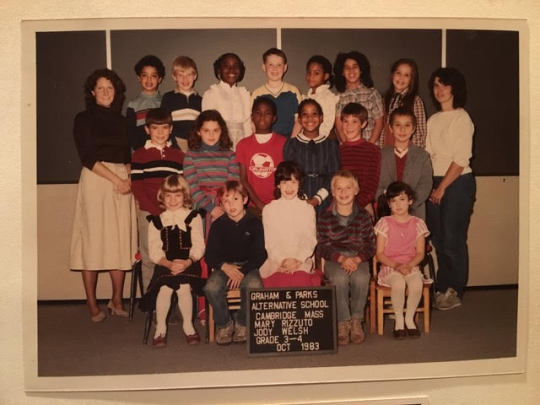
I’m in the front in the blue shirt. My best friend was Michael, the tall kid in the red shirt, whose family came from Barbados. Through the middle school years, anytime we weren’t in school we were roaming the streets like Dickensian urchins.
In the ‘90s, Cambridge got rid of rent control. Families who had lived there for four or five generations were squeezed out. Now the city is gentrified; but when I was growing up there, it was scrappy and beautiful. It was mostly working people, except for West Cambridge—where wealthy families lived, where professors lived. Where Cornel West, Yo-Yo Ma, and the Governor lived. East Cambridge was working-class Portuguese families, butcher shops, funeral parlors, and tow yards. Cambridgeport, where I lived, was mostly poor, Italian, Black, Greek, and Irish families. North Cambridge had some big housing projects and the school where my mom taught fifth grade—in a gigantic cement structure called The Tobin School that felt like it was far away because I would have to take a train AND a bus to get there. In reality, it’s like three miles from where we lived.
This is me hanging out in her classroom:
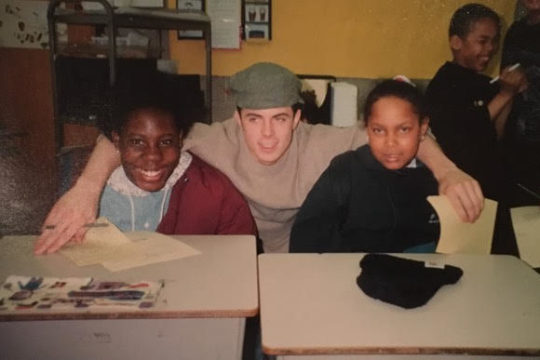
As people and places evolve, the past always reveals blemishes unseen at the time. However, Massachusetts manages, as time unfolds, to be a place that was so often on the right side. Not always, but often enough that I am proud to be from Cambridge, Massachusetts, no matter what.
From Massachusetts came the first national publication denouncing slavery, America’s “first feminist”, and The Cambridge Woman’s Suffrage League, which formed in 1886. My high school had the first girl to play tackle football in that division. Cambridge voted-in the first openly gay African-American mayor in our country. Right now our mayor is a very popular and forward-thinking Muslim woman who immigrated from Pakistan named Sumbul Siddiqui. We have marvels of architecture, science, and tech. It was in Cambridge that the very first email was ever sent (and received). And every year the Red Sox stand up to the wealthier bullies from the Bronx. These are all things we are immensely proud of, but nobody is resting on these laurels.
I am going to tell you about the places I remember fondly, whether they are still there or not.
Luckily, the city’s history isn’t going anywhere, and it hasn’t lost all of its charms. It is a place best seen by walking. So just walk. It’s also seasonal. Different activities for different seasons. But if you can hoof it for a few miles do this: start at the Old North Church and go by Paul Revere House, through Faneuil Hall, by The Old State House through Boston Common, through the Back Bay, go left and pass through Roxbury, another left, and go through South Boston till you hit the water and go left till you hit the Children’s Museum. Sit down and relax. If you just want a path, walk that. Map it or wander around. The city is full of little back streets with lots of character.
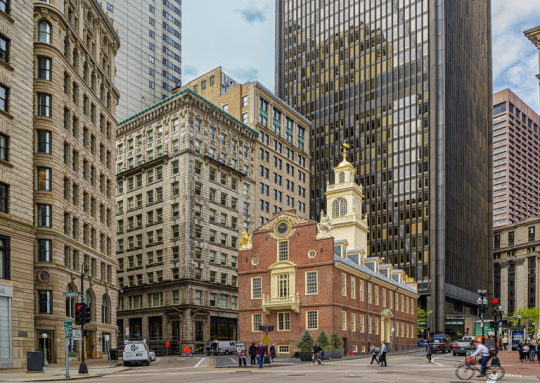
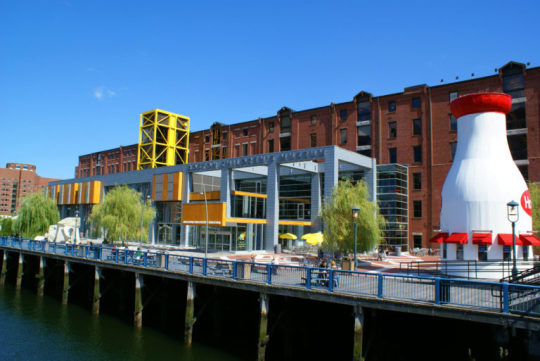
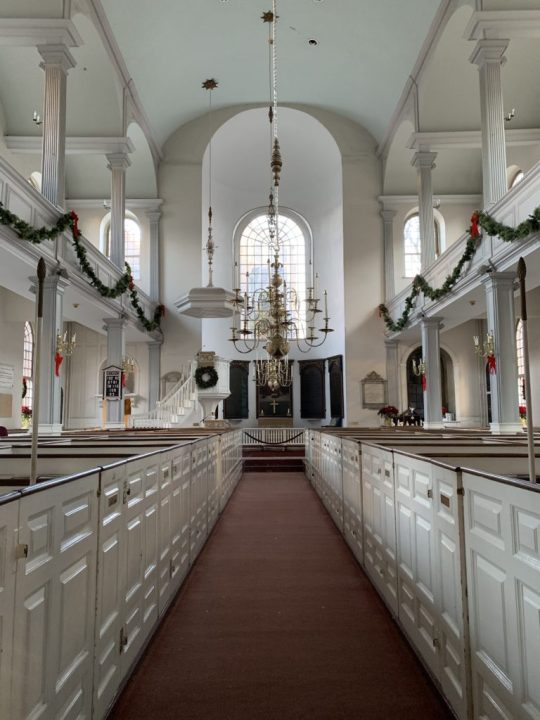

MY BOSTON FAVORITES
When looking for things to do and see in the area, you can ask ten people and get ten different answers. You will get a long list of historical buildings, or you will get names of some of the country’s prettiest parks, or you will get pointed toward the campuses of some of the very best schools in the world. But for every Bunker Hill, there are ten other places you haven’t heard of. So I am going to tell you about the places I remember fondly, whether they are still there or not. The thing about Boston is you can miss all the best stuff, and you will still leave thinking it is one of the best cities on Earth. Have fun.
Pinocchio Pizza, Harvard Square. I asked my son to describe it. He says, “the food is good but the vibe is fire, old school; whatever, just get a slice and sit on the ground. That’s why I like it.” I have no idea why he wants to sit on the ground, but I guess that’s part of the charm of the place. We’re both vegan so we both scrape the cheese off and eat bread and sauce. That should tell you something.
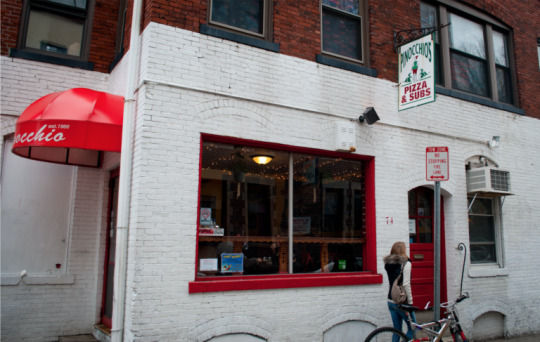
Oleana Restaurant on Hampshire Street in Cambridge. Chef Ana Sortun is a baller. The food is Turkish inspired, and it is delicious. Always. Friendly people, pretty inside, and it is in a nice residential neighborhood. My dad lived in an apartment a few blocks away behind a Store 24 until he was evicted back in 1989.

Maharaja, Harvard Square. Incredible Indian food. And it has one of the only third-story views of Harvard Square.

Veggie Galaxy is great diner food. It is vegan. It has breakfast, lunch, dinner, milkshakes and other deserts. All day and all night food that is filling and really good.

Life Alive Organic will serve you the healthiest and heartiest meal you can find anywhere. It’s across the street from City Hall, the post office, and the oldest YMCA in the country.

Cantab Lounge, where my dad was a bartender, and then a janitor when he was too drunk to be a bartender. I drank six thousand ginger ales, sitting in the corner at a sticky table while he worked. Forever it was a bar for postal workers that opened at 10 am, where alcoholics ate hard-boiled eggs from jars that had been sitting on the bar top for two weeks. A couple of days after initially writing this, I got an email from the owner. It is being sold after tens of thousands of years. I don’t know why I care because I don’t exactly have any fond memories from the place, but seeing the brick-and-mortar of your childhood torn down is a kind of mid-life, coming-of-age moment. Life is change.

Darwins Ltd coffee shop and attached mini-grocer and sandwich spot. If you get a coffee and then walk west two blocks on Mt. Auburn St. you will discover on your right a nice little park with a fountain to hang out. It is called Longfellow Park. Or you can look to your left and you will see the Charles River, and you can stroll there.
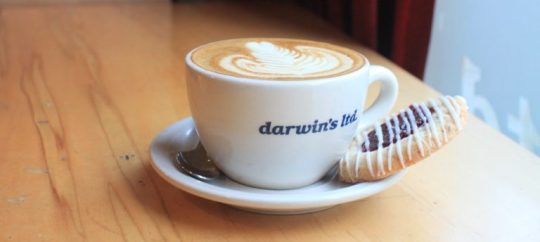
Fomu for dessert.
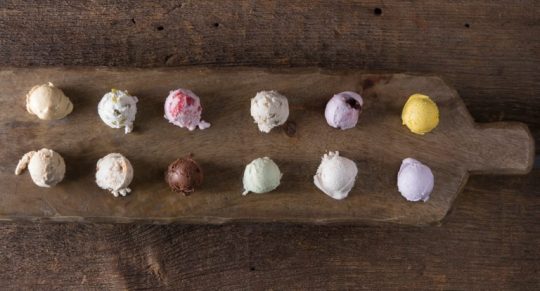
Zhu Pan Asian Cuisine and True Bistro for good vegan food.
Newbury Comics is famous and cool.
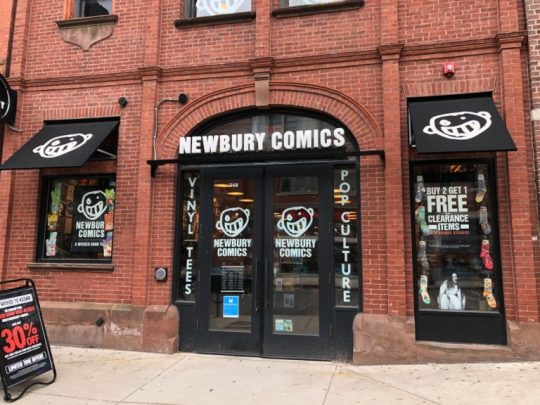
Million Year Picnic is for comic connoisseurs. They are both great. And they were both plagued by roving bands of middle school thieves in my day. The most notorious was named Mathew Maher. He is now a well-known theater actor on Broadway and appeared in the comic book movie Captain Marvel. But back then he stole shit.
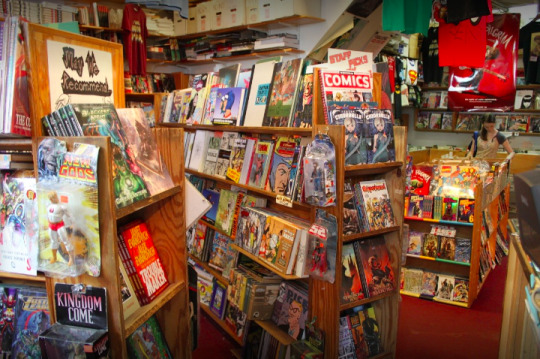
Harvard Coop is the best place to browse for books. Especially the kids section. We spend hours there and nobody kicks us out.

After the game ended everyone would come out and buy sausages [from me] on their way home, then I would clean up and go into a bar outside the park, where my boss was drinking and I’d wait till he was done so I could get a ride home. I was 12 years old. A couple of years ago I threw out the first pitch. Life is change.
The Isabella Stewart Gardner Museum is my favorite museum in town, maybe anywhere. It was once her home and it features an indoor garden that is perfect. It also has a great collection of art from around the world. Back on March 18, 1990, two famous paintings were stolen from the museum. As I remember it, a couple of guys showed up in the morning in police uniforms and the guard let them in. They tied the guard up and took a dozen paintings—Vermeer, Rembrandt, Degas—and vanished. The FBI never found them and never found the art. There are two plaques below two empty spaces on the walls to this day. On some days, classical musicians perform in random rooms while you walk around. You won’t want to leave.
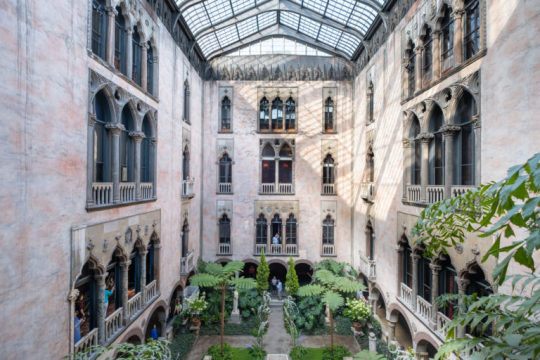
Fenway Park. Greatest professional sports arena of any kind. I used to sell sausages in front of the Cask ‘N Flagon, a bar behind The Green Monster.

It is the best baseball bar in the country. When everyone was in the park watching the game, and there was nobody buying food, I would go in and find a seat and watch the game with whoever I was working with; I have seen hundreds of games from every part of the park. After the game ended everyone would come out and buy sausages on their way home, then I would clean up and go into a bar outside the park, where my boss was drinking and I’d wait till he was done so I could get a ride home. I was 12 years old. A couple of years ago I threw out the first pitch. Life is change.
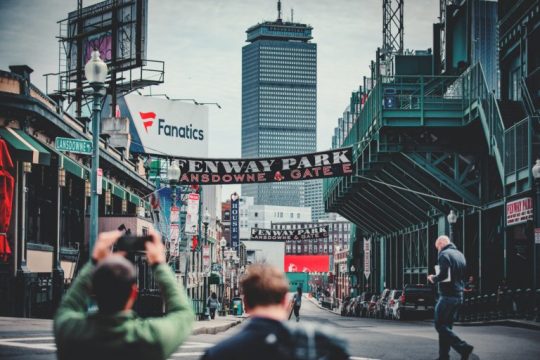
Plimoth Plantation is a living museum in Plymouth, which is 40 minutes from Boston. It is amazing. The actors working there are some of the best I have seen anywhere. If you are even mildly interested in history you have to go there.

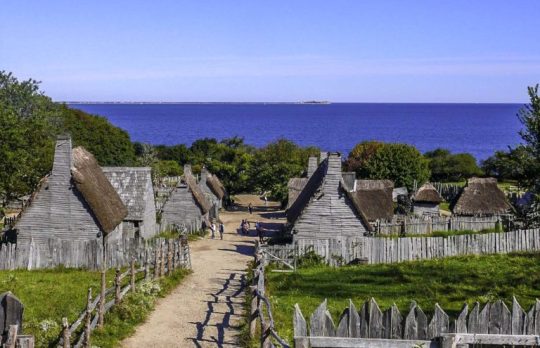
Fresh Pond is where you can go running or biking. Two and a half-mile loop.

Or you could hit The Emerald Necklace which is a great run that hits many of the best green areas, Franklin Park included. When we were young we would hop the fence and swim in the water. That isn’t done anymore ever, and everyone has grown up and leading better, more responsible lives.
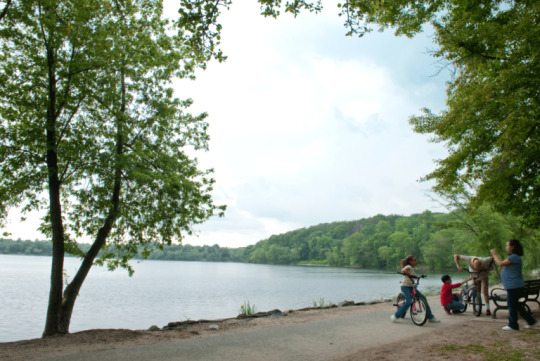
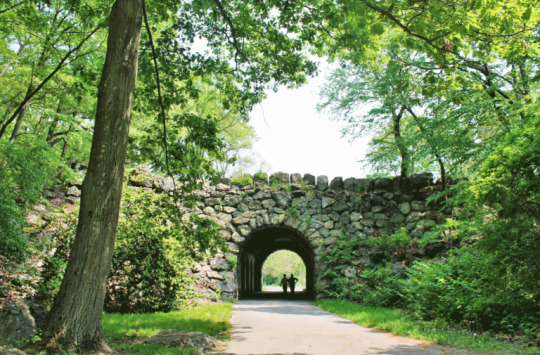
John Weeks Footbridge is a very pretty, very old, brick walking bridge that spans the Charles River. Watching the Charles Regatta from here is awesome. That is in the Fall. But it’s also great any night.
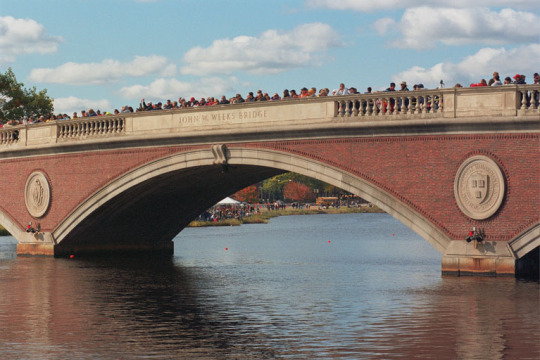

The King School is a grade school not too far from there. It has maybe the best playground in the city. If you are there in the summer you can just walk on. When I was a kid, the King School is where a girl went who I was head over heels in love with. I finally got a shot at winning her heart in my early twenties and blew it.
Mount Auburn Cemetery is beautiful if you like that kind of thing. Lots of cool people are buried there, and the trees and stones are really nice. It’s a maze but just walk uphill. You will reach a monument with a great view of the city.
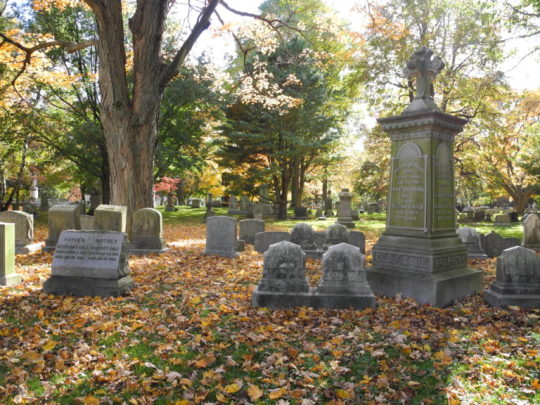
The American Repertory Theater puts on good plays. I grew up going there cause a friend of my mother’s directed many of the shows and could sneak us in the back. I wasn’t the adult making that decision; had I known better I would have scraped together the ticket price and supported the arts.

Boston Common is beautiful but you have to avoid all the shopping around it. If you have to shop go to:

NOMAD on Mass Ave in Cambridge is a store that you shouldn’t miss. In a world lost to chain stores and general homogenization of everything, Nomad is the real deal. Deb Colburn has been curating this place since I was ten. It is her store, and she has been trying to wake people up to folk art from around the world since Reagan was in office.
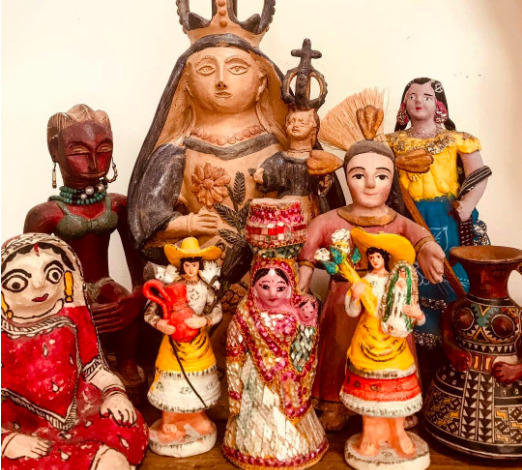
Bodega is a hidden high-end sneaker and casual wear store that must be entered through an unmarked door inside a bodega on a nearby side street. It’s cool how they have done it. Great presentation. Kids will like it.
KIDS ACTIVITIES
There are lots of things you can force your kids to do—things they won’t like the sound of at first, but will ultimately enjoy.

IMAGE CAPTIONS, LEFT TO RIGHT
On a rainy day, hop on the T and ride around town all day reading comics. Then stand outside in the warm rain (kids from LA don’t get this much).
Looking at murals. Cambridge has great murals everywhere. They are old and, incredibly, not vandalized. This one has been on this wall near the river since I was a kid. The child is mine and he is sick of walking around Cambridge.
If you feel like a pilgrim hit the gift shop at Plimoth Plantation.
Playing chess at Leavitt & Pierce Tobacco. You can inhale the scent of pipe tobacco without smoking it, and rent a chess set, clock, and table for $2 an hour in a beautiful old, wood-paneled shop with great ambiance.
Going to the oldest YMCA in the country.
Kayaking on the Charles River. You can get your kayak on Soldiers Field Rd. Take it east under all the bridges until you get to the inlet at Kendell Sq. It will all be clear. It will take about an hour.
Climbing the stairs at Harvard Football Stadium.
Reading books at the Harvard Coop.



NEARBY BOSTON
If you wanna go a little farther, go out to Gloucester for the day. Swim, eat, walk around, go back.
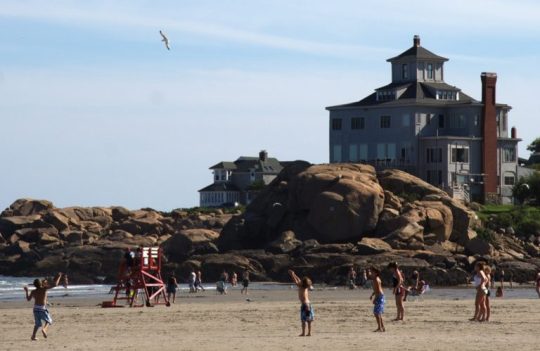
Whale watching sounds like a lame tourist trap but seeing whales up close will change the way you think about life on Earth.
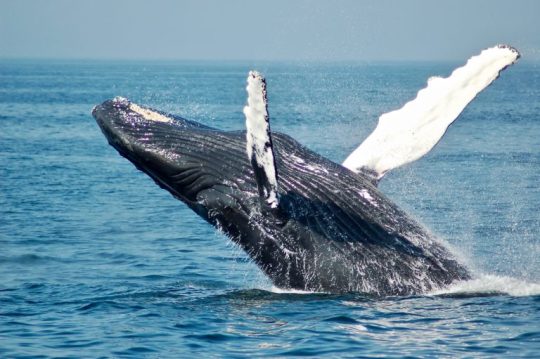
You can take the ferry from Downtown Boston to Provincetown. It is a great place to visit or stay a few days while in town. Ptown is the eastern-most point on the continent. I might be making that up, but it’s close. It’s an arm that sticks out into the Atlantic. It’s really lovely there with a great vibe all around. You can’t have a bad time and everyone is super happy to be there. The beaches are all beautiful. Sharks mostly only eat the seals and won’t come any closer to shore than two feet—but if you want to see a great white up close, we can make that happen.
Cape Cod has some great flea markets. If you plan on spending time on vacation with your family you can find some essentials, like a medieval battle helmet, at the flea market.
SALEM, MASSACHUSETTS
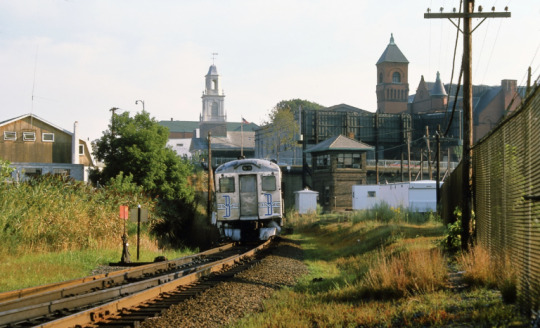
30 minutes on the local train line from downtown. Made famous by the Salem witch trials; a fun place to visit and walk around for about 128 minutes. Newburyport and Rockport lines, which depart from Boston’s North Station, stop at the Salem station. You can go into the homes of people who lived during the witch hunt.
The House of the Seven Gables, made famous by American author Nathaniel Hawthorne‘s novel The House of the Seven Gables, is a 1668 colonial mansion in Salem, Massachusetts named for its gables. The house is now a non-profit museum, with an admission fee charged for tours, as well as an active settlement house with programs for children. It was built for Captain John Turner and stayed with the family for three generations.
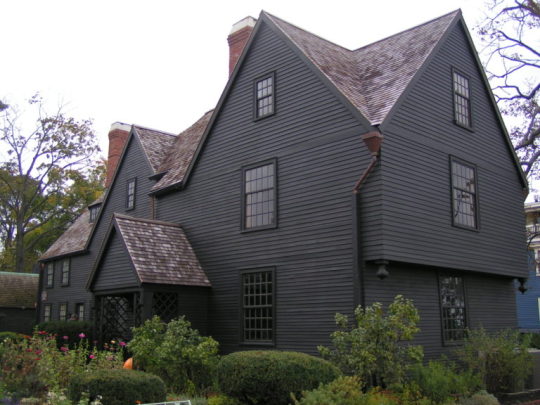
The Jonathan Corwin House in Salem, Massachusetts, known as The Witch House, was the home of Judge Jonathan Corwin. It is the only structure still standing in Salem with direct ties to the Salem witch trials of 1692, thought to be built between 1620 and 1642. Corwin bought it in 1675 when he was 35, and he lived there for more than 40 years. The house remained in the Corwin family until the mid-19th century and is located in the McIntire Historic District.
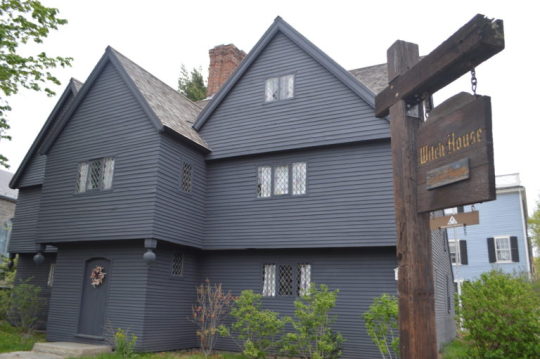
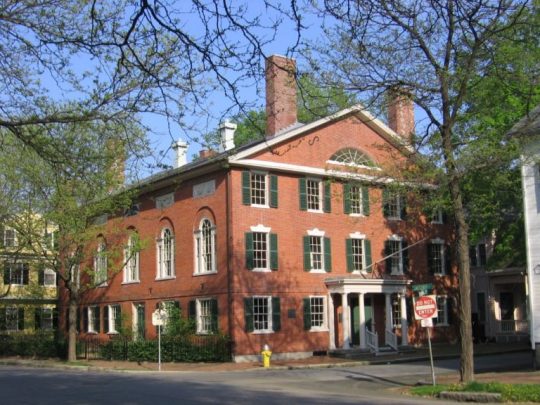
A MECCA FOR ARTISTS
Lastly, for centuries, Cambridge has been a mecca for artists, especially writers. Here are some spots to see if you like that kind of thing:
The corner of JFK Street and 1390 Massachusetts Avenue. This is a good spot. Here is why: America’s FIRST PUBLISHED POET was a woman named Anne Bradstreet who died in 1672 and lived on this spot! It went through lots of changes, and 300 years later, by the time I was walking around, it became a great burger place called THE TASTY. In 1996 or whatever, The Tasty appears in the movie Good Will Hunting in the scene when Matt Damon kisses Minnie Driver. It might have also appeared in the film Love Story back in the 70s. I mix them up. Now it is a CVS. God help us.
The Longfellow House. Henry Wadsworth Longfellow lived at 105 Brattle Street. The great poet taught at Harvard and lived in the Georgian mansion from 1837 until his death in 1882. Before the author, George Washington used the house as his headquarters during the Siege of Boston. The house is open to the public, and it is where I had my eighth-grade graduation ceremony. The mayor attended and forgot the name of our school in his address to the kids. I heard people mutter that he was drunk. I can’t blame him. I had my first drinks hours before that ceremony.
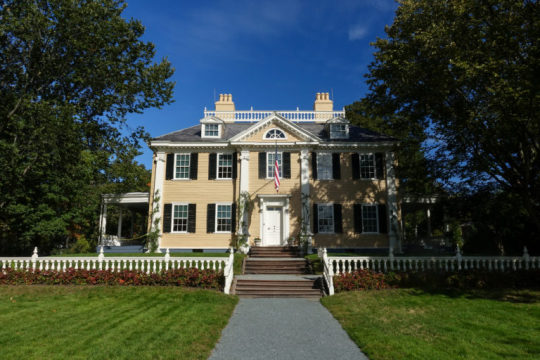
71 Cherry Street, Cambridge. The woman considered to be American’s FIRST feminist, Margaret Fuller, was born and lived here.
Henry and Alice James lived at 20 Quincy Street. The house was knocked down in 1930 and the Harvard Faculty Club was erected there.
W.E.B. DuBois lived at 20 Flagg Street. The writer and pioneer of civil rights rented a room in this Cambridgeport home from 1890 to 1893. This is blocks from my childhood home. He was the first African American to receive a degree from Harvard.
Robert Frost lived at 35 Brewster Street. Frost, who attended high school in Lawrence, Massachusetts, lived in the West Cambridge home from 1943 to 1963.
T.S. Eliot lived at 16 Ash Street.
E.E. Cummings lived at 104 Irving Street. He was an innovator. He also wrote a poem about “Cambridge Women”. He lived at the Irving Street home from 1892 until about 1917.
Also you can find homes of the genius Nabokov and the great and beloved Julia Childs if you look around.
Source
12 notes
·
View notes
Text
NEW LIBRARY MATERIAL September 2020 - February 2021
Bibliography
Sorted by Call Number / Author.
011.7 F
Fadiman, Clifton, 1904-1999. The new lifetime reading plan / : the classical guide to world literature, Revised and expanded. 4th ed. New York : HarperCollins Publishers, 1999, c1997.
155.2 G
Gladwell, Malcolm, 1963-. David and Goliath : underdogs, misfits, and the art of battling giants. First edition. Goliath : "Am I a dog that you should come to me with sticks?" -- The Advantages of Disadvantages (and the Disadvantages of Advantages). Vivek Ranadiv©♭: "It was really random. I mean, my father had never played basketball before." ; Teresa DeBrito: "My largest class was twenty-nine kids. Oh, it was fun." ; Caroline Sacks: "If I'd gone to the University of Maryland, I'd still be in science. -- The Theory of Desirable Difficulty. David Boies: You wouldn't wish dyslexia on your child. Or would you? ; Emil "Jay" Freireich: "How Jay did it, I don't know." ; Wyatt Walker: "De rabbit is de slickest o' all de animals de Lawd ever made." -- The Limits of Power. Rosemary Lawlor: "I wasn't born that way. This was forced upon me." ; Wilma Derksen: "We have all done something dreadful in our lives, or have felt the urge to." ; Andr©♭ Trocm©♭: "We feel obliged to tell you that there are among us a certain number of Jews.". This book uncovers the hidden rules that shape the balance between the weak and the mighty and the powerful and the dispossessed. In it the author challenges how we think about obstacles and disadvantages, offering a new interpretation of what it means to be discriminated against, or cope with a disability, or lose a parent, or attend a mediocre school, or suffer from any number of other apparent setbacks. He begins with the real story of what happened between the giant and the shepherd boy (David and Goliath) those many years ago. From there, the book examines Northern Ireland's Troubles, the minds of cancer researchers and civil rights leaders, murder and the high costs of revenge, and the dynamics of successful and unsuccessful classrooms, all to demonstrate how much of what is beautiful and important in the world arises from what looks like suffering and adversity. -- From book jacket.
170 H
Haidt, Jonathan, author. The happiness hypothesis : finding modern truth in ancient wisdom. Paperback edition. "The Happiness Hypothesis is a book about ten Great Ideas. Each chapter is an attempt to savor one idea that has been discovered by several of the world's civilizations--to question it in light of what we now know from scientific research, and to extract from it the lessons that still apply to our modern lives and illuminate the causes of human flourishing. Award-winning psychologist Jonathan Haidt shows how a deeper understanding of the world's philosophical wisdom and its enduring maxims--like "do unto others as you would have others do unto you," or "what doesn't kill you makes you stronger"--can enrich and even transform our lives."--Back cover.
171 K
Kohn, Alfie. The brighter side of human nature : altruism and empathy in everyday life. New York : Basic Books, c1990.
305.5 W
Wilkerson, Isabel, author. Caste : the origins of our discontents. First edition. The man in the crowd -- Toxins in the permafrost and heat rising all around -- The arbitrary construction of human divisions -- The eight pillars of caste -- The tentacles of caste -- The consequences of caste -- Backlash -- Awakening -- Epilogue: A world without caste. "In this brilliant book, Isabel Wilkerson gives us a masterful portrait of an unseen phenomenon in America as she explores, through an immersive, deeply researched narrative and stories about real people, how America today and throughout its history has been shaped by a hidden caste system, a rigid hierarchy of human rankings. Beyond race, class, or other factors, there is a powerful caste system that influences people's lives and behavior and the nation's fate. Linking the caste systems of America, India, and Nazi Germany, Wilkerson explores eight pillars that underlie caste systems across civilizations, including divine will, bloodlines, stigma, and more. Using riveting stories about people--including Martin Luther King, Jr., baseball's Satchel Paige, a single father and his toddler son, Wilkerson herself, and many others--she shows the ways that the insidious undertow of caste is experienced every day. She documents how the Nazis studied the racial systems in America to plan their out-cast of the Jews; she discusses why the cruel logic of caste requires that there be a bottom rung for those in the middle to measure themselves against; she writes about the surprising health costs of caste, in depression and life expectancy, and the effects of this hierarchy on our culture and politics. Finally, she points forward to ways America can move beyond the artificial and destructive separations of human divisions, toward hope in our common humanity. Beautifully written, original, and revealing, Caste: The Origins of Our Discontents is an eye-opening story of people and history, and a reexamination of what lies under the surface of ordinary lives and of America life today."--.
305.8 W
Williamson, Joel. A rage for order : Black/White relations in the American South since emancipation. New York, NY : Oxford University Press, 1968. Full ed.: published as The crucible of race. 1984. Traces the history of race relations, examines changing public attitudes, and tells the stories of those involved in Civil Rights movement.
305.9 P
Pipher, Mary Bray. The middle of everywhere : the world's refugees come to our town. First edition. Cultural collisions on the Great Plains -- The beautiful laughing sisters-an arrival story -- Into the heart of the heartland -- All that glitters ... -- Children of hope, children of tears -- Teenagers--Mohammed meets Madonna -- Young adults--"Is there a marriage broker in Lincoln?"-- Family--"A bundle of sticks cannot be broken" -- African stories -- Healing in all times and places -- Home-a global positioning system for identity -- Building a village of kindness. Offers the tales of refugees who have escaped countries riddled by conflict and ripped apart by war to realize their dream of starting a new life in America, detailing their triumph over adversity.
306.4 P
Pollan, Michael. The botany of desire : a plant's-eye view of the world. Random House trade pbk. ed. New York : Random House, 2002. Desire : sweetness, plant : the apple (Malus domestica) -- Desire : beauty, plant : the tulip (Tulipa) -- Desire : intoxication, plant : marijuana (Cannabis sativa x indica) -- Desire : control, plant : the potato (Solanum tuberosum). Focusing on the human relationship with plants, the author of Second nature uses botany to explore four basic human desires, sweetness, beauty, intoxication, and control, through portraits of four plants that embody them, the apple, tulip, marijuana, and potato. Every school child learns about the mutually beneficial dance of honeybees and flowers; the bee collects nectar and pollen to make honey and, in the process, spreads the flowers' genes far and wide. In The botany of desire, Michael Pollan ingeniously demonstrates how people and domesticated plants have formed a similarly reciprocal relationship. In telling the stories of four familiar species that are deeply woven into the fabric of our lives, Pollan illustrates how the plants have evolved to satisfy humankind's most basic yearnings. And just as we've benefited from these plants, the plants have done well by us. So who is really domesticating whom?.
307.1 I
Immerwahr, Daniel, 1980-. Thinking small : the United States and the lure of community development. First Harvard University Press paperback edition 2018. Cambridge, MA : Harvard University Press, 2015. Preface: Modernization, development, and community -- Introduction: Actually existing localism -- When small was big -- Development without modernization -- Peasantville -- Grassroots empire -- Urban villages -- Epilogue: What is dead and what is undead in community development?.
323.60973 I
In the hands of the people : Thomas Jefferson on equality, faith, freedom, compromise, and the art of citizenship. First edition. New York, NY : Random House, 2020. "Thomas Jefferson believed in the covenant between a government and its citizens, in both the government's responsibilities to its people and also the people's responsibility to the republic. In this illuminating collection, a project of the Thomas Jefferson Foundation, #1 New York Times bestselling author Jon Meacham has gathered Jefferson's most powerful and provocative reflections on the subject, drawn from public speeches and documents as well as his private correspondence. Still relevant centuries later, Jefferson's words provide a manual for U.S. citizenship in the twenty-first century. His thoughts will re-shape and revitalize the way readers relate to concepts including Freedom: "Divided we stand, united we fall." The importance of a free press:"Were it left to me to decide whether we should have a government without newspapers, or newspapers without a government, I should not hesitate a moment to prefer the latter." Public education: "Enlighten the public generally, and tyranny and oppressions of body & mind will vanish like evil spirits at the dawn of day." Participation in government: A citizen should be "a participator in the government of affairs not merely at an election, one day in the year, but every day.""-- Provided by publisher.
324.6 P
Terborg-Penn, Rosalyn. African American women in the struggle for the vote, 1850-1920. Bloomington : Indiana University Press, c1998. Revisiting the question of race in the woman suffrage movement -- African American women in the first generation of woman suffragists : 1850-1869 -- African American woman suffragists finding their own voices : 1870s and 1880s -- Suffrage strategies and ideas : African American women leaders respond during "the nadir" -- Mobilizing to win the vote : African American women's organizations -- Anti-black woman suffrage tactics and African American women's responses -- African American women as voters and candidates -- The nineteenth amendment and its meaning for African American women. This study of African American women's roles in the suffrage movement breaks new ground. Rosalyn Terborg-Penn draws from many original documents to take a comprehensive look at the African American women who sought the right to vote. She discovers numerous Black suffragists previously unknown. Analyzing the women's own stories, she examines why they joined the woman suffrage movement in the United States and how they participated in it - with white women, Black men, as members of African American women's organizations, or simultaneously in all three. Terborg-Penn further discusses their various levels of interaction and types of feminist philosophy. Noting that not all African American woman suffragists were from elite circles, Terborg-Penn finds representation from working-class and professional women as well.They came from all parts of the nation. Some employed radical, others conservative means to gain the right to vote. Black women, however, were unified in working to use the ballot to improve not only their own status, but the lives of Black people in their communities. Drawing from innumerable sources, Terborg-Penn argues that sexism and racism prevented African American women from voting and from full participation in the national suffrage movement. Following the ratification of the Nineteenth Amendment, state governments in the South, enacted policies which disfranchised African American women, with many white suffragists closing their eyes to the discriminatory acts. Despite efforts to keep Black women politically powerless, Terborg-Penn contends that the Black suffrage was a source of empowerment. Every political and racial effort to keep African American women disfranchised met with their active resistance until Black women achieved full citizenship.
326.80922 B
Brands, H. W., author. The zealot and the emancipator : John Brown, Abraham Lincoln and the struggle for American freedom. First Edition. Pottawatomie -- Springfield -- Harpers Ferry -- The telegraph office. "What do moral people do when democracy countenances evil? The question, implicit in the idea that people can govern themselves, came to a head in America at the middle of the nineteenth century, in the struggle over slavery. John Brown's answer was violence--violence of a sort some in later generations would call terrorism. Brown was a deeply religious man who heard the God of the Old Testament speaking to him, telling him to do whatever was necessary to destroy slavery. When Congress opened Kansas territory to slavery, the eerily charismatic Brown raised a band of followers to wage war against the evil institution. One dark night his men tore several proslavery settlers from their homes and hacked them to death with broadswords, as a bloody warning to others. Three years later Brown and his men assaulted the federal arsenal at Harpers Ferry, Virginia, with the goal of furnishing slaves with weapons to murder their masters in a race war that would cleanse the nation of slavery once and for all. Abraham Lincoln's answer was politics. Lincoln was an ambitious lawyer and former office-holder who read the Bible not for moral guidance but as a writer's primer. He disliked slavery yet didn't consider it worth shedding blood over. He distanced himself from John Brown and joined the moderate wing of the new, antislavery Republican party. He spoke cautiously and dreamed big, plotting his path to Washington and perhaps the White House. Yet Lincoln's caution couldn't preserve him from the vortex of violence Brown set in motion. Arrested and sentenced to death, Brown comported himself with such conviction and dignity on the way to the gallows that he was canonized in the North as a martyr to liberty. Southerners responded in anger and horror that a terrorist was made into a saint. Lincoln shrewdly threaded the needle of the fracturing country and won election as president, still preaching moderation. But the time for moderation had passed. Slaveholders lumped Lincoln with Brown as an enemy of the Southern way of life; seven Southern states left the Union. Lincoln resisted secession, and the Civil War followed. At first a war for the Union, it became the war against slavery Brown had attempted to start. Before it was over, slavery had been destroyed, but so had Lincoln's faith that democracy can resolve its moral crises peacefully"--.
328.73 M
Meacham, Jon, author. His truth is marching on : John Lewis and the power of hope. First edition. Overture: the last march -- A hard life, a serious life -- The spirit of history -- Soul force -- In the image of God and democracy -- We are going to make you wish you was dead -- I'm going to die here -- This country don't run on love -- Epilogue: against the rulers of the darkness. "John Lewis, who at age twenty-five marched in Selma and was beaten on the Edmund Pettus Bridge, is a visionary and a man of faith. Using intimate interviews with Lewis and his family and deep research into the history of the civil rights movement, Meacham writes of how the activist and leader was inspired by the Bible, his mother's unbreakable spirit, his sharecropper father's tireless ambition, and his teachers in nonviolence, Reverend James Lawson and Martin Luther King, Jr. A believer in hope above all else, Lewis learned from a young age that nonviolence was not only a tactic but a philosophy, a biblical imperative, and a transforming reality. At the age of four, Lewis, ambitious to become a preacher, practiced by preaching to the chickens he took care of. When his mother cooked one of the chickens, the boy refused to eat it--his first act of non-violent protest. Integral to Lewis's commitment to bettering the nation was his faith in humanity and in God, and an unshakable belief in the power of hope. Meacham calls Lewis "as important to the founding of a modern and multiethnic twentieth- and twenty-first century America as Thomas Jefferson and James Madison and Samuel Adams were to the initial creation of the nation-state in the eighteenth century. He did what he did--risking limb and life to bear witness for the powerless in the face of the powerful--not in spite of America, but because of America, and not in spite of religion, but because of religion"--.
333.95 W
Wilson, Edward O. A window on eternity : a biologist's walk through Gorongosa National Park. First Simon & Schuster hardcover edition. Prologue: The Search for Eternity -- The Sacred Mountain of Mozambique -- Once There Were Giants -- War and Redemption -- Dung and Blood -- The Twenty-Foot Crocodile -- The Elephant Whisperer -- The House of Spiders -- The Clash of Insect Civilizations -- The Log of an Entomological Expedition -- The Struggle for Existence -- The Conservation of Eternity. "E.O. Wilson, one of the most celebrated scientists in the United States, shows why biodiversity is vital to the future of Earth and to our own species through the story of an African national park that may be the most diverse place on earth, in a gorgeously illustrated book"--. "The remarkable story of how one of the most biologically diverse habitats in the world was destroyed, restored, and continues to evolve--with stunning, full-color photographs by two of the world's best wildlife photographers. In 1976, Gorongosa National Park was the premier park in Mozambique, boasting one of the densest wildlife populations in all of Africa. Across 1,500 square miles of lush green floodplains, thick palm forests, swampy lakes, and vast plains roamed creatures great and small, from herds of wildebeest and elephant to countless bird species and insects yet to be classified. Then came the civil war of 1978-1992, when much of the ecosystem was destroyed, reducing some large animal populations by 90 percent or more. Due to a remarkable conservation effort sponsored by an American entrepreneur, the park was restored in the 1990s and is now evolving back to its former state. This is the story of that incredible transformation and why such biological diversity is so important. In A Window on Eternity, world-renowned biologist and two-time Pulitzer Prize-winner Edward O. Wilson shows why biodiversity is vital to the future of the Earth, including our human population. It is in places like Gorongosa in Africa, explains Wilson, that our own species evolved. Wilson takes readers to the forested groves of the park's watershed on sacred Mount Gorongosa, then far away to deep gorges along the edge of the Rift Valley, places previously unexplored by biologists, with the aim of discovering new species and assessing their ancient origins. He treats readers to a war between termites and raider ants, describes 'conversations' with elephant herds, and explains the importance of a one-day 'bioblitz.' Praised as 'one of the finest scientists writing today' (Los Angeles Times), Wilson uses the story of Gorongosa to show the significance of biodiversity to humankind"--.
340.092 S
Sligh, Clarissa T., artist. Transforming hate : an artist's book. First edition. "This book evolved from a project for which I folded origami cranes from pages of white supremacist books for the exhibition, Speaking Volumes: Transforming Hate ... I was trying to look at what it was like for me to turn hateful words into a beautiful art object. What actually evolved from that exploration helped me understand more fully the many levels of oppression and violence at the intersections of race, gender, class and sexual orientation." --inside front cover.
343.730 I
Internet law. Amenia, New York : Grey House Publishing, 2020.
345.73 C
Carter, Dan T. Scottsboro : a tragedy of the American South. Rev. ed. Fourth printing. Baton Rouge : Louisiana State University Press, 2007.
349.41 H
Honor©♭, Tony, 1921-2019. About law : an introduction. Reprint: 2013. Law -- History -- Government -- Property -- Contracts and treaties -- Crimes -- Torts -- Forms and procedures -- Interpretation -- Justice -- Does law matter? -- Glossary.
363.73 P
Pollution. New York, NY : Grey House Publishing, 2020.
371.102 A
Agarwal, Pooja K., author. Powerful teaching : unleash the science of learning. First edition. Introduction -- Discover the power behind power tools -- Build a foundation with retrieval practice -- Empower teaching with retrieval practice strategies -- Energize learning with spacing and interleaving -- Engage students with feedback-driven metacognition -- Combine power tools and harness your toolbox -- Keeping it real: use power tools to tackle challenges, not add to them -- Foster a supportive environment: use power tools to reduce anxiety and strengthen community -- Spark conversations with students about the science of learning -- Spark conversations with parents about the science of learning -- Powerful professional development for teachers and leaders -- Do-it-yourself retrieval guide -- Conclusion: unleash the science of learning.
512 G
Algebra. 2004. New York : Springer Science+Business Media, 2004.
575.1 A
Arney, Kat, author. How to code a human. Meet your genome -- Our genetic journey -- How do genes work? -- Under attack! -- Who do you think your are? -- People are not peas -- Genetic superheroes -- Turn me on -- Sticky notes -- The RNA world -- Building a baby -- Wiring the brain -- Compatibility genes -- X and Y -- The viruses that made us human -- When things go wrong -- Human 2.0. "How to Code a Human takes you on a mind-bending journey through the world of the double helix, revealing how our DNA encodes our genes and makes us unique. Covering all aspects of modern genetics from the evolution of our species to inherited diseases, "junk" DNA, genetic engineering and the intricacies of the molecular processes inside our cells, this is an astonishing and insightful guide to the code of life"--Back cover.
598 S
Sibley, David, 1961- author, illustrator. What it's like to be a bird : from flying to nesting, eating to singing -- what birds are doing, and why. How to use this book -- Introduction -- Portfolio of birds -- Birds in this book -- What to do if... -- Becoming a birder. Explore more than two hundred species, and more than 330 new illustrations by the author, in this special, large-format volume, where many of the primary illustrations are reproduced life-sized. While its focus is on familiar backyard birds -- blue jays, nuthatches, chickadees -- What It's Like to Be a Bird also examines certain species that can be fairly easily observed, such as the seashore-dwelling Atlantic Puffin. David Sibley's exacting artwork and wide-ranging expertise bring observed behaviors vividly to life. And while the text is aimed at adults -- including fascinating new scientific research on the myriad ways birds have adapted to environmental changes -- it is nontechnical, making it the perfect occasion for parents and grandparents to share their love of birds with young children, who will delight in the big, full-color illustrations of birds in action. -- back cover.
613.6 C
Bushcraft Illustrated: a visual guide. New York, NY : Simon & Schuster, Inc. (Adams Media: imprint of Simon & Schuster), 2019.
638.1 B
Michael Bush. The Practical beekeeper. Nehawka, Nebraska : X-Star Publishing Company, 2004-2011. V. 1 - The Practical Beekeeing Naturally; V.2 - Intermediate Beekeeping Naturally.
660.6 D
Druker, Steven M., author. Altered genes, twisted truth : how the venture to genetically engineer our food has subverted science, corrupted government, and systematically deceived the public.
709.2 A
Atalay, B©ơlent. Math and the Mona Lisa: : the art and science of Leonardo da Vinci. New York, NY : Smithsonian Books in association with HarperCollins Publishers, 2006. Leonardo was one of history's true geniuses, equally brilliant as an artist, scientist, and mathematician. Following Leonardo's own model, Atalay searches for the internal dynamics of art and science. He provides an overview of the development of science from the dawn of civilization to today's quantum mechanics. From this base, Atalay offers a view into Leonardo's restless intellect and modus operandi, allowing us to see the source of his ideas and to appreciate his art from a new perspective.
741.5 G
Greenberg, Isabel. The encyclopedia of early earth : a graphic novel. First American edition. Love in a very cold climate -- Part 1. The land of Nord. The three sisters of Summer Island ; Beyond the frozen sea ; The gods ; The odyssey begins -- Part 2. Britanitarka. Summer and winter ; Creation ; Medicine man ; The storytellers ; Creation ; Dag and Hal ; The old lady and the giant ; The time of the giants ; The children of the mountain ; The long night ; Dead towns & ghost men -- Part. 3. Migdal Bavel. Migdal Bavel ; The mapmaker of Migdal Bavel ; The bible of Birdman: Genesis ; Bible of Birdman, book of Kiddo: The great flood ; The tower of Migdal Bavel ; The palace of whispers ; The gods #2 -- Part 4. The South Pole. The gods #3 -- Appendices. A brief history of time ; The Nords ; Hunting and fishing ; The 1001 varieties of snow ; The invisible hunter ; Britanitarka ; Birds & beast from early Earth ; The moonstone ; The plucked firebird of Hoo. "Chronicles the explorations of a young man as he paddles from his home in the North Pole to the South Pole. There, he meets his true love, but their romance is ill-fated. Early Earth's unusual and finicky polarity means the lovers can never touch"--Publisher's website.
808.1 G
How poetry can change your heart. San Francisco, CA : Chronicle Books, 2019.
808.5 E
Franklin, Sharon. Essentials of speech communication. Evanston, Ill. : McDougal Littell, 2001.
808.53 H
Hanson, Jim. NTC's dictionary of debate. Lincolnwood, Ill., USA : National Textbook Co., c1990.
808.53 W
Strategic debate. Textbook. Columbus, OH : Glencoe/McGraw-Hill, 2006.
810.8 B
Lepucki, Edan, author. The best American nonrequired reading 2019. This anthology presents a selection of short works from mainstream and alternative American periodicals published in 2019, including nonfiction, screenplays, television writing, fiction, and alternative comics.
815 R
Representative American speeches, 2019-2020. Amenia, New York : Grey House, Publishing, 2020. "Selected from a diverse field of speakers and venues, this volume offers some of the most engaging American speeches of the year. Distinguished by its diversity, covering areas in politics, education, popular culture, as well as trending topics in the news, these speeches provide an interesting format to explore some of the year's most important stories."-Publisher.
909.09 D
Davis, Jack E., 1956- author. The Gulf : the making of an American sea. First edition. Prologue : history, nature, and a forgotten sea -- Introduction : birth -- Part one. Estuaries, and the lie of the land and sea : aborigines and colonizing Europeans. Mounds -- El golfo de M©♭xico -- Unnecessary death -- A most important river, and a "magnificent" bay -- Part two. Sea and sky : American debuts in the nineteenth century. Manifest destiny -- A fishy sea -- The wild fish that tamed the coast -- Birds of a feather, shot together -- Part three. Preludes to the future. From bayside to beachside -- Oil and the Texas toe dip -- Oil and the Louisiana plunge -- Islands, shifting sands of time -- Wind and water -- Part four. Saturation and loss : post-1945. The growth coast -- Florida worry, Texas slurry -- Rivers of stuff -- Runoff, and runaway -- Sand in the hourglass -- Losing the edge -- Epilogue : a success story amid so much else. Significant beyond tragic oil spills and hurricanes, the Gulf has historically been one of the world's most bounteous marine environments, supporting human life for millennia. Based on the premise that nature lies at the center of human existence, Davis takes readers on a compelling and, at times, wrenching journey from the Florida Keys to the Texas Rio Grande, along marshy shorelines and majestic estuarine bays, both beautiful and life-giving, though fated to exploitation by esurient oil men and real-estate developers. Davis shares previously untold stories, parading a vast array of historical characters past our view: sports-fishermen, presidents, Hollywood executives, New England fishers, the Tabasco king, a Texas shrimper, and a New York architect who caught the "big one". Sensitive to the imminent effects of climate change, and to the difficult task of rectifying the assaults of recent centuries, this book suggests how a penetrating examination of a single region's history can inform the country's path ahead. --.
910.92 I
Inskeep, Steve, author. Imperfect union : how Jessie and John Fr©♭mont mapped the West, invented celebrity, and helped cause the Civil War. Aid me with your influence -- The equal merits of differing peoples -- The current of important events -- Miseries that attend a separation -- I determined to make there a home -- The manifest purpose of providence -- A taste for danger and bold daring adventure -- The Spaniards were somewhat rude and inhospitable -- I am not going to let you write anything but your name -- Do not suppose I lightly interfere in a matter belonging to men -- We pressed onward with fatal resolution -- Jessie Benton Fr©♭mont was the better man of the two -- We thought money might come in handy -- All the stupid laurels that ever grew -- Decidedly, this ought to be struck out -- He throws away his heart. "Steve Inskeep tells the riveting story of John and Jessie Fr©♭mont, the husband and wife team who in the 1800s were instrumental in the westward expansion of the United States, and thus became America's first great political couple John Fr©♭mont grew up amid family tragedy and shame. Born out of wedlock in 1813, he went to work at age thirteen to help support his family in Charleston, South Carolina. He was a nobody. Yet, by the 1840s, he rose to become one of the most acclaimed people of the age -- known as a wilderness explorer, bestselling writer, gallant army officer, and latter-day conquistador, who in 1846 began the United States' takeover of California from Mexico. He was a celebrity who personified the country's westward expansion. Mountains, towns, ships, and streets were named after him. How did he climb so far? A vital factor was his wife, Jessie Benton Fr©♭mont, the daughter of a powerful United States senator. Jessie wanted to play roles in politics and exploration, which were then reserved for men. Frustrated, she threw her skill and passion into promoting her husband. Ordered by the US Army to map the Oregon Trail, John traveled thousands of miles on horseback, indifferent to his safety and that of the other members of his expeditions. When he returned home, Jessie helped him to shape dramatic reports of his adventures, which were reprinted in newspapers and bound as popular books. Jessie became his political adviser, and a power player in her own right. In 1856, the famous couple strategized as John became the first-ever presidential nominee of the newly established Republican Party. The party had been founded in opposition to slavery, and though both Fr©♭monts were Southerners they became symbols of the cause. With rare detail and in consummate style, Steve Inskeep tells the story of a couple whose joint ambitions and talents intertwined with those of the nascent United States itself. Americans linked the Fr©♭monts with not one but three great social movements of the time -- westward settlement, women's rights, and opposition to slavery. Theirs is a surprisingly modern story of ambition and fame; they lived in a time of globalization, technological disruption, and divisive politics that foreshadowed our own. The Fr©♭monts' adventures amount to nothing less than a tour of the early American soul"--.
940.54 S
Sledge, E. B. (Eugene Bondurant), 1923-. China marine. Oxford University Paperback, 2003. Tuscaloosa : University of Alabama Press, c2002. China Marine 1 -- Epilogue: I Am Not the Man I Would Have Been 149.
940.54 T
Terkel, Studs, 1912-2008. "The good war" : an oral history of World War Two. New York : New Press, [1997.
943.36 H
Hunt, Irmgard A. (Irmgard Albine), 1934-. On Hitler's mountain : overcoming the legacy of a Nazi childhood. First Harper Perennial edition. 2006. On writing a childhood memoir -- pt. 1. 1906-1934 : the P©œhlmanns. Roots of discontent ; In search of a future -- pt. 2. 1934-1939 : Hitler's willing followers. The rituals of life ; "Heil Hitler" ; Ominous undercurrents ; Meeting Hitler ; Gathering clouds -- pt. 3. 1939-1945 : war and surrender. Early sacrifice ; Learning to hate school ; Lessons from a wartime friendship ; A weary interlude in Selb ; Hardship and disintegration ; War comes to Berchtesgaden ; The end at last -- pt. 4. 1945-1948 : Bitter justice, or, Will justice be done? Survival under the Star-spangled Banner ; The curse of the past ; Escape from darkness. The author provides an account of her life growing up in Berchtesgaden, a Bavarian village at the foot of Hitler's mountain retreat, discussing a childhood encounter with the Nazi leader, and shedding light on why ordinary Germans, including her parents, tolerated and even supported the Nazis.
951.04 M
Mitter, Rana, 1969- author. Forgotten ally : China's World War II, 1937-1945. First U.S. Edition. The path to war: As close as lips and teeth : China's fall, Japan's rise ; A new revolution ; The path to confrontation -- Disaster: Thirty-seven days in summer : the outbreak of war ; The battle for Shanghai ; Refugees and resistance ; Massacre at Nanjing ; The battle of Taierzhuang ; The deadly river -- Resisting alone: "A sort of wartime normal" ; Flight into the unknown ; The road to Pearl Harbor -- The poisoned alliance ; Destination Burma ; Hunger in Henan ; States of terror ; Conference at Cairo ; One war, two fronts ; Showdown with Stilwell ; Unexpected victory ; Epilogue: The enduring war. "For decades, a major piece of World War II history has gone virtually unwritten. China was the fourth great ally, partner to the United States, the Soviet Union, and Great Britain, yet its drama of invasion, resistance, slaughter, and political intrigue remains little known in the West. In this emotionally gripping book, made possible through access to newly unsealed Chinese archives, Rana Mitter unfurls the story of China's World War II as never before and rewrites the larger history of the war in the process. He focuses his narrative on three towering leaders -- Chiang Kai-shek, Mao Zedong, and the lesser-known collaborator Wang Jingwei -- and extends the timeline of the war back to 1937, when Japanese and Chinese troops began to clash, fully two years before Hitler invaded Poland. Unparalleled in its research and scope, Forgotten Ally is a sweeping, character-driven history that will be essential reading not only for anyone with an interest in World War II, but also for those seeking to understand today's China, where, as Mitter reveals, the echoes of the war still reverberate"--.
952 J
Takada, Noriko. The Japanese way : aspects of behavior, attitudes, and customs of the Japanese. 2nd ed. Chicago : McGraw-Hill, c2011 . Abbreviations and contractions -- Addresses and street names -- Arts and crafts -- Asking directions -- Bathing and bathhouses -- Body language and gestures -- Borrowed words and acronyms -- Bowing -- Brand names and brand-name goods (burando-hin) -- Business cards (meish) -- Calendar -- Cherry blossoms and flower viewing -- Compliments -- Conversation -- Crime and safety -- Dating and marriage -- Death, funerals, and mourning -- Dialects -- Dining out -- Dinner invitations -- Directness -- Discussion and consensus -- Dress -- Drinking -- Driving -- Earthquakes -- Education -- English-language study -- Family -- The Jag and the national anthem -- Flowers and plants -- Food and eating -- Footwear -- Foreigners -- Gender roles -- Geography -- Gifts -- Government -- Hellos and good-byes -- Holidays and festivals -- Honorific speech (keigo) -- Hotels and inns -- Housing and furnishings -- Humor -- The Imperial family -- Individuals and couples -- Introductions and networking -- Karaoke -- Leisure (rgli) -- Letters, greeting cards, and postal services -- Love and affection -- Lucky and unlucky numbers -- Male/female speech -- Money -- Mt. Fuji -- Music and dance -- Myths, legends, and folklore -- Names, titles, and forms of address -- Numbers and counting -- Oriental medicine -- Pinball (pachinko) -- Politeness and rudeness -- Population -- Privacy -- Reading material -- Religion -- The seasons -- Shopping -- Shrines and temples -- Signatures and seals -- Social structure -- Sports -- Table etiquette -- Telephones -- Television/radio/movies -- Thank-yous and regrets -- Theater -- Time and punctuality -- Tipping and service charges -- Toilets -- Travel within Japan -- Vending machines -- Visiting private homes -- Weights, measures, and sizes -- Working hours -- The written language -- "Yes" and "no" -- "You first" -- Zoological calendar.
972.81 P
Proskouriakoff, Tatiana, 1909-1985. Maya history. First edition. Foreword / Gordon R. Wills -- Tatiana Proskouriakoff, 1909-1985 / Ian Graham -- Introduction / Rosemary A. Joyce -- 1. The Earliest Records: (A.D. 288-337) -- 2. The Arrival of Strangers: (A.D. 337-386) -- 3. The Maya Regain Tikal: (A.D. 386-435) -- 4. Some Ragged Pages: (A.D. 435-485) -- 5. Expansion of the Maya Tradition: (A.D. 485-534) -- 6. A Time of Troubles: (A.D. 534-583) -- 7. Recovery on the Frontiers: (A.D. 583-633) -- 8. Growth and Expansion: (A.D. 633-682) -- 9. Toward a Peak of Prosperity: (A.D. 682-736) -- 10. On the Crest of the Wave: (A.D. 731-780) -- 11. Prelude to Disaster: (A.D. 780-830) -- 12. The Final Years: (A.D. 831-909) -- 13. The Last Survivals: (A.D. 909-938). The ruins of Maya city-states occur throughout the Yucatan peninsula, Guatemala, Belize, and in parts of Honduras and El Salvador. But the people who built these sites remain imperfectly known. Though they covered standing monuments (stelae) and public buildings with hieroglyphic records of their deeds, no Rosetta Stone has yet turned up in Central America to help experts determine the exact meaning of these glyphs. Tatiana Proskouriakoff, a preeminent student of the Maya, made many breakthroughs in deciphering Maya writing, particularly in demonstrating that the glyphs record the deeds of actual human beings. This discovery opened the way for a history of the Maya, a monumental task that Proskouriakoff was engaged in before her death in 1985. Her work, Maya History, has been made ready for press by the able editorship of Rosemary Joyce. Maya History reconstructs the Classic Maya period (roughly A.D. 250-900) from the glyphic record on stelae at numerous sites, including Altar de Sacrificios, Copan, Dos Pilas, Naranjo, Piedras Negras, Quirigua, Tikal, and Yaxchilan. Proskouriakoff traces the spread of governmental institutions from the central Peten, especially from Tikal, to other city-states by conquest and intermarriage. And she also shows how the gradual introduction of foreign elements into Maya art mirrors the entry of outsiders who helped provoke the eventual collapse of the Classic Maya. Fourteen line drawings of monuments and over three hundred original drawings of glyphs amplify the text. Maya History has been long awaited by scholars in the field. It is sure to provoke lively debate and greater understanding of this important area in Mesoamerican studies.
973.04 A
Asian Americans : the movement and the moment. A wide-ranging collection of essays and material which documents the rich, little-known history of Asian American social activism during the years 1965-2001. This book examines the period not only through personal accounts and historical analysis, but through the visual record--utilizing historical prictorial materials developed at UCLA's Asian American Studies Center on Chinese, Japanese, Korean, Filipino, and Vietnamese Americans. Included are many reproductions of photos of the period, movement comics, demonstration flyers, newsletters, posters and much more.
973.0496 D
W.E.B. DuBois. The Souls of Black Folk. BIGFONTBOOKS.COM.
973.7 B
Barney, William L. Battleground for the Union : the era of the Civil War and Reconstruction, 1848-1877. Englewood Cliffs, N.J. : Prentice Hall, c1990.
973.9 I
Imani, Blair, author. Making our way home : the Great Migration and the Black American dream. First edition. Separate but equal: Reconstruction-1919 -- Beautiful -- and ugly, too: 1920-1929 -- I, too, am America: 1930-1939 -- Liberty and justice for all: 1940-1949 -- Trouble ahead: 1950-1959 -- The time is in the street, you know: 1960-1969 -- All poer to all the people: 1970-1979. "A powerful illustrated history of the Great Migration and its sweeping impact on Black and American culture, from Reconstruction to the rise of hip hop. Over the course of six decades, an unprecedented wave of Black Americans left the South and spread across the nation in search of a better life--a migration that sparked stunning demographic and cultural changes in twentieth-century America. Through gripping and accessible historical narrative paired with illustrations, author and activist Blair Imani examines the largely overlooked impact of The Great Migration and how it affected--and continues to affect--Black identity and America as a whole. Making Our Way Home explores issues like voting rights, domestic terrorism, discrimination, and segregation alongside the flourishing of arts and culture, activism, and civil rights. Imani shows how these influences shaped America's workforce and wealth distribution by featuring the stories of notable people and events, relevant data, and family histories. The experiences of prominent figures such as James Baldwin, Fannie Lou Hamer, El Hajj Malik El Shabazz (Malcolm X), Ella Baker, and others are woven into the larger historical and cultural narratives of the Great Migration to create a truly singular record of this powerful journey"--.
973.9 L
Longley, Kyle, author. LBJ's 1968 : power, politics, and the presidency in America's year of upheaval. A nation on the brink: the State of the Union Address, January 1968 -- Those dirty bastards, are they trying to embarrass us? The Pueblo Incident, January-December 1968 -- Tet: a very near thing, January-March 1968 -- As a result, I will not seek re-election: the March 31, 1968 speech -- The days the earth stood still: the assassination of Martin Luther King, Jr., April 1968 -- He hated him, but loved him: the assassination of Robert Kennedy, June 1968 -- The big stumble: the Fortas Affair, June-October 1968 -- The tanks are rolling: Czechoslovakia crushed, August 1968 -- The perfect disaster: the Democratic National Convention, August 1968 -- Is this treason?: the October surprise that wasn't, October-December 1968 -- The last dance, January 1969 -- Conclusion.
974.7 F
Feldman, Deborah, 1986-. Unorthodox : the scandalous rejection of my Hasidic roots. 1st Simon & Schuster trade pbk. ed. 2020. New York : Simon & Schuster Paperbacks, 2012. Traces the author's upbringing in a Hasidic community in Brooklyn, describing the strict rules that governed her life, arranged marriage at the age of seventeen, and the birth of her son, which led to her plan to leave and forge her own path in life.
975.7 B
Ball, Edward, 1959-. Slaves in the family. Paperback edition. Journalist Ball confronts the legacy of his family's slave-owning past, uncovering the story of the people, both black and white, who lived and worked on the Balls' South Carolina plantations. It is an unprecedented family record that reveals how the painful legacy of slavery continues to endure in America's collective memory and experience. Ball, a descendant of one of the largest slave-owning families in the South, discovered that his ancestors owned 25 plantations, worked by nearly 4,000 slaves. Through meticulous research and by interviewing scattered relatives, Ball contacted some 100,000 African-Americans who are all descendants of Ball slaves. In intimate conversations with them, he garnered information, hard words, and devastating family stories of precisely what it means to be enslaved. He found that the family plantation owners were far from benevolent patriarchs; instead there is a dark history of exploitation, interbreeding, and extreme violence.--From publisher description.
975.7 B
Ball, Edward, 1959-. The sweet hell inside : a family history. First edition. Preface -- Part 1-The Master and His Orphans-Part 2-High Yellow-Porch 3 -Eyes Sadder Then the Grave-Part 4-Nigger Rich-Part 5-The Orphans Dancers-Part 6-A Trunk in the Grass-Notes-Permission and Photography Credits-Acknowledgments-Index. If. Recounts the lives of the Harleston family of South Carolina, the progeny of a Southern gentleman and his slave who cast off their blemished roots and achieved affluence in part through a surprisingly successful funeral parlor business. Their wealth afforded the Harlestons the comfort of chauffeurs, tailored clothes, and servants whose skin was darker than theirs. It also launched the family into a generation of glory as painters, performers, and photographers in the "high yellow" society of America's colored upper class. The Harlestons' remarkable 100-year journey spans the waning days of Reconstruction, the precious art world of the early 1900s, the back alleys of the Jazz Age, and the dawn of the civil rights movement.--From publisher description.
DVD Gre
The Great debaters. 2-disc collector's edition; Widescreen [ed.]. [New York] : Weinstein Company, c2008. Denzel Washington, Nate Parker, Jurnee Smollett, Denzel Whitaker, Jermaine Williams, Forest Whitaker, Gina Ravera, John Heard, Kimberly Elise, Devyn Tyler, Trenton McClain Boyd. Melvin B. Tolson is a professor at Wiley College in Texas. Wiley is a small African-American college. In 1935, Tolson inspired students to form the school's first debate team. Tolson turns a group of underdog students into a historically elite debate team which goes on to challenge Harvard in the national championship. Inspired by a true story.
F Alb
Albertalli, Becky, author. What if it's us. Told in two voices, when Arthur, a summer intern from Georgia, and Ben, a native New Yorker, meet it seems like fate, but after three attempts at dating fail they wonder if the universe is pushing them together or apart.
F Arc
Astral Traveler's Daughter. First Simon & Schuster Trade Paperback edition, April 2019. New York, NY : Simon & Schuster, Inc, 2019. "Last year, Teddy Cannon discovered she was psychic. This year, her skills will be put to the test as she investigates a secretive case that will take her far from home--and deep into the past in the thrilling follow-up to School for Psychics"-- Provided by publisher.
F Chi
Chiaverini, Jennifer, author. Enchantress of numbers : a novel of Ada Lovelace. "The only legitimate child of Lord Byron, the most brilliant, revered, and scandalous of the Romantic poets, Ada was destined for fame long before her birth. Estranged from Ada's father, who was infamously "mad, bad, and dangerous to know," Ada's mathematician mother is determined to save her only child from her perilous Byron heritage. Banishing fairy tales and make-believe from the nursery, Ada's mother provides her daughter with a rigorous education grounded in mathematics and science. Any troubling spark of imagination--or worse yet, passion or poetry--is promptly extinguished. Or so her mother believes. When Ada is introduced into London society as a highly eligible young heiress, she at last discovers the intellectual and social circles she has craved all her life. Little does she realize that her delightful new friendship with inventor Charles Babbage--brilliant, charming, and occasionally curmudgeonly--will shape her destiny ..."--Jacket.
F Chr
Christie, Michael, 1976- author. Greenwood : a novel. First U.S. edition. "It's 2038 and Jake Greenwood is a storyteller and a liar, an overqualified tour guide babysitting ultra-rich vacationers in one of the world's last remaining forests. It's 2008 and Liam Greenwood is a carpenter, fallen from a ladder and sprawled on his broken back, calling out from the concrete floor of an empty mansion. It's 1974 and Willow Greenwood is out of jail, free after being locked up for one of her endless series of environmental protests: attempts at atonement for the sins of her father's once vast and violent timber empire. It's 1934 and Everett Greenwood is alone, as usual, in his maple syrup camp squat when he hears the cries of an abandoned infant and gets tangled up in the web of a crime that will cling to his family for decades. And throughout, there are trees: thrumming a steady, silent pulse beneath Christie's effortless sentences and working as a guiding metaphor for withering, weathering, and survival. A shining, intricate clockwork of a novel, Greenwood is a rain-soaked and sun-dappled story of the bonds and breaking points of money and love, wood and blood--and the hopeful, impossible task of growing toward the light"--.
F Cle
Memoirs of Fanny Hill. Published by arrangement with Edito-Service S. A., Geneva, Switzerland. New York, NY : Peebles Press International Inc, 1973.
F Col
Andre's Reboot. Birmingham, AL : Stephen B. Coleman, Publisher, 2019.
F Def
Moll Flanders. Reprint. 2020. Columbia, SC, : August 12, 2020.
F Def
Defoe, Daniel, 1661?-1731. The fortunes and misfortunes of the famous Moll Flanders ... A new edition.
F Fit
Fitzgerald, F. Scott (Francis Scott), 1896-1940, author. The great Gatsby. Foreword to the seventy-fifth anniversary edition: F. Scott Fitzgerald, The Great Gatsby, and the House of Scribner ; Preface / by Matthew J. Bruccoli -- THE GREAT GATSBY -- The text of The Great Gatsby / by Matthew J. Bruccoli -- Publisher's afterword / Charles Scribner III -- FSF : life and career / James L.W. West III. Overview: The mysterious Jay Gatsby embodies the American notion that it is possible to redefine oneself and persuade the world to accept that definition. Gatsby's youthful neighbor, Nick Carraway, fascinated with the display of enormous wealth in which Gatsby revels, finds himself swept up in the lavish lifestyle of Long Island society during the Jazz Age. Considered Fitzgerald's best work, The Great Gatsby is a mystical, timeless story of integrity and cruelty, vision and despair. The timeless story of Jay Gatsby and his love for Daisy Buchanan is widely acknowledged to be the closest thing to the Great American Novel ever written.
F Jam
The Turn of the Screw, the Aspern Papers, and Two Stories. Barnes & Noble Classics, 2003; Intro. and notes by David L. Sweet. New York, NY : Barnes & Noble, 2003.
F Ora
Orange, Tommy, 1982- author. There there. First Vintage books edition. Here is a story of several people, each of whom has private reasons for travelling to the Big Oakland Powwow. Jacquie Red Feather is newly sober and trying to make it back to the family she left behind in shame. Dene Oxendene is pulling his life together after his uncle's death and has come to work at the powwow to honour his uncle's memory. Opal Viola Victoria Bear Shield has come to watch her nephew Orvil Red Feather, who has taught himself traditional Indian dance through YouTube videos and has come to the powwow to dance in public for the very first time. There will be glorious communion, and a spectacle of sacred tradition and pageantry. And there will be sacrifice, and heroism, and unspeakable loss.
F Pat
Patchett, Ann, author. The Dutch house : a novel. First edition. "Ann Patchett, the New York Times bestselling author of Commonwealth and State of Wonder, returns with her most powerful novel to date: a richly moving story that explores the indelible bond between two siblings, the house of their childhood, and a past that will not let them go"--.
F Rob
Roberts, Nora, author. The awakening. First edition. "#1 New York Times bestselling author of the epic Chronicles of The One trilogy returns with the first in a brand new series where parallel worlds clash over the struggle between good and evil"--.
F Row
Rowling, J. K. Harrius Potter et philosophi lapis. Cover illustration first pub. 2015. London : Bloomsbury, 2003, ℗♭1997. Latin translation, Peter Needham, 2003. Rescued from the outrageous neglect of his aunt and uncle, a young boy with a great destiny proves his worth while attending Hogwarts School for Witchcraft and Wizardry.
F Rus
Russell, Karen, 1981-. Swamplandia! 1st ed (Borzoi Book). New York : Alfred A. Knopf, 2011. Twelve year old Ava must travel into the Underworld part of the swamp in order to save her family's dynasty of Bigtree alligator wresting. This novel takes us to the swamps of the Florida Everglades, and introduces us to Ava Bigtree, an unforgettable young heroine. The Bigtree alligator wrestling dynasty is in decline, and Swamplandia!, their island home and gator wrestling theme park, formerly no. 1 in the region, is swiftly being encroached upon by a fearsome and sophisticated competitor called the World of Darkness. Ava's mother, the park's indomitable headliner, has just died; her sister, Ossie, has fallen in love with a spooky character known as the Dredgeman, who may or may not be an actual ghost; and her brilliant big brother, Kiwi, who dreams of becoming a scholar, has just defected to the World of Darkness in a last ditch effort to keep their family business from going under. Ava's father, affectionately known as Chief Bigtree, is AWOL; and that leaves Ava, a resourceful but terrified thirteen, to manage ninety eight gators as well as her own grief. Against a backdrop of hauntingly fecund plant life animated by ancient lizards and lawless hungers, the author has written a novel about a family's struggle to stay afloat in a world that is inexorably sinking.
F Sha
Shaw, Irwin, 1913-1984. The young lions. Chicago : University of Chicago Press, 2000.
F Tol
The Hobbit. 75th Anniversary. The text of this edition is based on edition published by HarperCollins Publishers in 1995. Bilbo Baggins, a respectable, well-to-do hobbit, lives comfortably in his hobbit-hole until the day the wandering wizard Gandalf chooses him to take part in an adventure from which he may never return.
F Tow
Towles, Amor. Rules of civility. A chance encounter with a handsome banker in a jazz bar on New Year's Eve 1938 catapults Wall Street secretary Katey Kontent into the upper echelons of New York society, where she befriends a shy multi-millionaire, an Upper East Side ne'er-do-well, and a single-minded widow.
F Wat
Watson, Ren©♭e, author. Piecing me together. Tired of being singled out at her mostly-white private school as someone who needs support, high school junior Jade would rather participate in the school's amazing Study Abroad program than join Women to Women, a mentorship program for at-risk girls. "Acclaimed author Renee Watson offers a powerful story about a girl striving for success in a world that too often seems like it's trying to break her. Jade believes she must get out of her poor neighborhood if she's ever going to succeed. Her mother tells her to take advantage of every opportunity that comes her way. And Jade has: every day she rides the bus away from her friends and to the private school where she feels like an outsider, but where she has plenty of opportunities. But some opportunities she doesn't really welcome, like an invitation to join Women to Women, a mentorship program for "at-risk" girls. Just because her mentor is black and graduated from the same high school doesn't mean she understands where Jade is coming from. She's tired of being singled out as someone who needs help, someone people want to fix. Jade wants to speak, to create, to express her joys and sorrows, her pain and her hope. Maybe there are some things she could show other women about understanding the world and finding ways to be real, to make a difference.".
F Wil
Williams, Katie, 1978- author. Tell the machine goodnight. Pearl's job is to make people happy. Every day, she provides customers with personalized recommendations for greater contentment. She's good at her job, her office manager tells her, successful. But how does one measure an emotion? Meanwhile, there's Pearl's teenage son, Rhett. A sensitive kid who has forged an unconventional path through adolescence, Rhett seems to find greater satisfaction in being unhappy. The very rejection of joy is his own kind of "pursuit of happiness." As his mother, Pearl wants nothing more than to help Rhett--but is it for his sake or for hers? Certainly it would make Pearl happier. Regardless, her son is one person whose emotional life does not fall under the parameters of her job--not as happiness technician, and not as mother, either.-Amazon.
SC D
The Daniel Defoe Collection : The Life and strange surprising adventures of Robinson Crusoe, of York, Mariner; The farther adventures of Robinson Crusoe; A journal of the plague year; Moll Flanders. South Carolina, USA, : August 2020.
SC L
Link, Kelly, author. Get in trouble : stories. Random House trade paperback edition. The summer people -- I can see right through you -- Secret identity -- Valley of the girls -- Origin story -- The lesson -- The new boyfriend -- Two houses -- Light. A collection of short stories features tales of a young girl who plays caretaker to mysterious guests at the cottage behind her house and a former teen idol who becomes involved in a bizarre reality show.
SC P
Packer, ZZ. Drinking coffee elsewhere. 1st Riverhead trade pbk. ed. New York : Riverhead Books, 2004, ℗♭2003. Brownies -- Every tongue shall confess -- Our Lady of Peace -- The ant of the self -- Drinking coffee elsewhere -- Speaking in tongues -- Geese -- Doris is coming. Discovered by The New Yorker, Packer "forms a constellation of young black experience"* whether she's writing from the perspective of a church-going black woman who has a crisis in faith, a young college student at Yale, or a young black man unwillingly accompanying his father to the Million Man March. This universally appealing collection of short fiction has already established ZZ Packer as "a writer to watch.".
SC S
Sedaris, David, author. Calypso. First edition. When he buys a beach house on the Carolina coast, David Sedaris envisions long, relaxing vacations spent playing board games and lounging in the sun with those he loves most. And life at the Sea Section, as he names the vacation home, is exactly as idyllic as he imagined, except for one tiny, vexing realization: it's impossible to take a vacation from yourself. Sedaris sets his powers of observation toward middle age and mortality, that vertiginous moment when your own body betrays you and you realize that the story of your life is made up of more past than future.
SC S
Sedaris, David, author. Let's explore diabetes with owls. First Back Bay paperback edition, June 2014. From the perils of French dentistry to the eating habits of the Australian kookaburra, from the squat-style toilets of Beijing to the particular wilderness of a North Carolina Costco, we learn about the absurdity and delight of a curious traveler's experiences. Whether railing against the habits of litterers in the English countryside or marveling over a disembodied human arm in a taxidermist's shop, Sedaris takes us on side-splitting adventures that are not to be forgotten.
5 notes
·
View notes
Photo

𝐋𝐀 𝐆𝐑𝐀𝐍𝐃𝐄 𝐅𝐀𝐌𝐈𝐋𝐋𝐄 𝐁𝐎𝐔𝐑𝐆𝐄𝐎𝐈𝐒 !
O termo bourgeois pode até significar algo semelhante a classe média na França, porém é indiscutível que o nome carrega uma influência inigualável, não só ao solo francês como também em âmbito mundial. São os fundadores do Groupe Styx, um conglomerado multinacional reconhecido por ser a maior empresa de artigos de luxo do mundo e especializada em roupas, perfumes, lojas, jóias, bebidas e hotéis, com grandes marcas como, por exemplo, Louis Vuitton, Moët & Chandon e Bulgari. Além disso, possuem também metade das ações da Orange SA, a principal empresa de telecomunicações da França, e também ligações com a política local.
O patriarca da família, Jean-Claude Bourgeois Robert De Niro, é um empresário francês que nasceu no seio de uma família de pequenos industriais. Durante a adolescência, conheceu e se apaixonou por Cécile Moitessier Julie Andrews, a única filha de uma atriz e um rico empresário, que lhe confiou com a gerência de suas empresas e mais tarde com sua posse. Foi sob seu controle ambicioso que elas floresceram e o nome Bourgeois se tornou a potência que é. Atualmente, é o chairman da Styx e foi eleito um dos empresários mais ricos do mundo pela Forbes Magazine, com sua rede digna de 110 bilhões de dólares.
É válido resssaltar que Cécile também não fica para trás nos negócios da família. É uma colecionadora de artes e sua coleção pessoal inclui peças de Picasso, Yves Klein, Henry Moore, e Andy Warhol. Ela foi de extrema importância em estabelecer Styx como o maior patrono de artes na França. O grupo oferece competições anuais e internacionais para estudantes de belas artes de todo o mundo terem um ano de estágio em suas marcas e também é uma grande contribuidora do Louvre.
𝐒𝐔𝐁𝐒𝐈𝐃𝐈𝐀𝐑𝐈𝐄𝐒: Uma lista parcial incluindo algumas das marcas e subsidiárias mais conhecidas da Styx:

𝐇𝐄𝐈𝐑𝐒:
Grégoire Bourgeois George Clooney, é o primogênito de Jean-Claude e Cécile e o atual CEO da Styx, bem como deputado na Assembléia Nacional Francesa. Desde a juventude, demonstra ser a imagem do herdeiro perfeito: ambicioso, focado, responsável. Seguiu os passos do pai com primor, tanto nos estudos, como também nas conquistas em seu meio. Aos 29 anos já demonstrava capacidade e qualificação de sobra para atingir posto altíssimos. Em 1993, ele se casou com a namorada de longa data, Anne-Marie Cayard Kate Beckinsale, uma socialite e sobrinha de um rico empresário de bebidas. O casal possui quatro filhos: Maxence Ben Barnes, Édouard Matt Hitt, Eliott Nick Robinson e Sabine Hailee Steinfeld.
Ronan Bourgeois Leonardo DiCaprio, sempre foi de longe o mais carismático dos quatro, Cecile alega que era o que mais havia puxado a veia dramática de sua mãe, uma antiga estrela do cinema francês. Ao invés de seguir os passos da família, foi para os EUA, estudar direito em Harvard. Foi lá que conheceu Denise Hudson Cate Blanchett, uma colega bolsista, com quem acabou se casando, para a surpresa do público de fora. Desta união vieram: Manon Elle Fanning, Philippe Ty Simpkins e Daphné Mckenna Grace. Em 2014, Ronan surpreendeu a todos ao anunciar no jantar anual dos Bourgeois que, em suas palavras, finalmente se livrariam dele, pois haviam descoberto um câncer em seu coração. Faleceu em maio de 2016, após dois anos de luta, deixando sua esposa a frente de suas ações. Denise, hoje, é uma das grandes forças por trás da Styx, junto do sogro e o cunhado.
Roméo Bourgeois Tom Hardy é o gênio, playboy, bilionário e filantropo do grupo. Com o jeito irreverente e até caótico, chocou a nação quando anunciaram que ele fora aceito na École de l'Air, onde mais tarde se formou como oficial e piloto de engenharia. Roméo possui também um doutorado em matemática e já assumiu alguns cargos nas empresas da família. Assim como a mãe, é apaixonado por artes e demonstra um talento apurado para fotografia, já tendo inclusive publicado alguns livros com suas fotos. Um solteirão incorrigível, é famoso por seus inúmeros relacionamentos com modelos e atrizes belíssimas. Roméo é também um piloto profissional qualificado pela IFR e possui 3 recordes de velocidade.
Odelia Bourgeois Margot Robbie, uma socialite e colecionadora de artes. Há quem diga que a herdeira, em sua adolescência, foi uma das maiores it girls de sua geração, atraindo olhares e flash por onde passava e também criando tendências. Nunca houve dúvidas que era a maçã dos olhos de seu pai, mas também não são poucos os boatos sobre o relacionamento conturbado com sua mãe. Dizem as más línguas que Odelia causou inúmeros escândalos que foram varridos para debaixo do tapete com a influência de sua família. Aos 21 anos, companhou o irmão até os EUA ( dizem as más línguas que após uma grande briga com Cecile ), e eventualmente foi aceita e se formou em Yale. Logo depois disso, se casou com o herdeiro de um grande empresário americano, contudo, a união acabou de forma inesperada, quando ela pediu o divórcio, abrindo mão de qualquer bem, e meses depois se casou novamente com Arthur Walters Joseph Morgan, o padre que realizou a cerimônia de renovação das bodas de seus antigos sogros. O casal hoje tem uma filha, Gabrielle Summer Fontana.
@gg-pontos
#eu ia fazer um edit bonitinho mas a preguiça mds...#na vdd eu não ia fazer nada mas ai essa árvore genealogica saiu do nada então eu TIVE q fazer isso#não serve pra absolutamente nada além da minha loucura mas bem quando sem muse vc tem q se localizar ne#prfv ignorem o print eu não sabia como botar bonitinho dessa maneira#familia baseada em quase todos os milionarios franceses ....... q ódio mds#* ♡ › 𝒄𝒓𝒆𝒂𝒕𝒊𝒐𝒏𝒔 ∶ a sombre wish for a lasting pyre¸ of wood and timber feeding the fire ❜#G&G:PONTOS
11 notes
·
View notes
Text
Gentrification and living in Cambridge, MA (Part 1)
Cambridge, Ma, the birthplace of Harvard and MIT, it's beautiful when you're a student who loves academics. The buildings here are breathtaking, but do you ever wonder? What is the cost to create this type of environment? Well, that's why I'm here to set the record straight. I lived here for 4 years, from 2013-2017, for high school, in section 8.
My dream was to attend Cambridge Rindge and Latin, the building took my breath away when I wandered here in the end of 7th grade, thinking there would be no better place to live, and my wonderful mother who wanted the best education for me changed location for me and my little brother. For the betterment of our education, she sacrificed everything for us. The fantasy was short-lived for me once I met my guidance counselor in the community C,
we'll call him "Mr. White" for now. He is everything I am not...white, Male, and privileged. I never minded the culture clash until I realized that I was in a school full of students I’ll never know the names of. It was like walking into a sea full of sharks. I never stood a chance standing at 5'1, brown, and Muslim. Once Mr. White heard my mother's broken English, he realized something I didn't, he could easily dictate my classes. It only took him 5 minutes to pick out my classes and he later got yelled at by the secretary for it in front of me. So much for having a competent role-model. I saw my so-called guidance counselor four times after that, he was merely a figure of authority and was rarely anywhere to be seen. What the heck was he always running from? He gets paid to guide students and he couldn't even do that.
While I struggled with basic classes, such as Physics, my only advice was to stay after class to learn more from a teacher who barely knew how to teach physics. That was horrendous, I ended up teaching myself Physics in an online class. When an online class can teach better than a teacher who teaches kids in high school, that’s when you should reform the education system and carefully choose who you let teach a class. When I wanted to learn computer science,I was denied, you’d THINK the school would be happy when learning that a female wants to learn programming, but instead I was told “No, you’re an art student, you shouldn't learn computer science" by Mr. White. I want to be a versatile student, not just an art student. I struggled with my identity as a student in Cambridge.
I spent my summers working for the Community art center in Area 4, I hosted public art events in parks in Cambridge and Kendall square. I learned something in the Art center that I never learned in school, and that was racism and classism. The word gentrification was thrown around like hotcakes and for the first time, I learned what everyone was scared of, being kicked out of their own homes. Why was this never taught in school and why did a 6-year-old tell me “I’m sad, my friend is movingaway because it’s too expensive to live here”?
I went home and did my research. According to my research, I was living in the most expensive place to live in the whole state of Massachusetts. I did my internship at suburban justice, a building near Harvard. I was excited to learn more about social justice and to attend social justice workshops. In one of the workshops, I was told that section 8 keeps the poor from saving money by increasing rent. The rich want us to be unable to afford more than the necessities. I realized this to be the truth when I started earning some cash through a Mural Apprentice job in 2018. I only earned 150-250 a month, and section 8 increased the rent by $100 more. Aside from the $8.50 bus fare I was paying to get to work 2-3 times a week, section 8 was trying to steal the very little I had to my name. I am writing this to start a conversation. Thank you for reading part 1 of Gentrification and living in Cambridge, MA.
12 notes
·
View notes